Global stock markets remained mixed today as investors weighed fresh U.S. inflation data, corporate earnings reports, and the ongoing economic uncertainty in China and Europe. The U.S. stock market opened slightly higher on Monday morning, with the Dow Jones Industrial Average rising 0.4%, the S&P 500 climbing 0.3%, and the Nasdaq Composite gaining 0.5% in early trading. Investors responded positively to June's U.S. Consumer Price Index (CPI) report, which showed inflation cooling slightly to an annual rate of 3.0%, down from 3.3% in May."Markets are optimistic that the Federal Reserve may pause or even cut interest rates by the fall," said Lisa Raymond, chief analyst at Morgan & Co. "But it's still a wait-and-see situation, especially with more earnings coming this week." Wall Street Opens Higher Dow +0.4%, S&P 500 +0.3%, Nasdaq +0.5% on Monday morning. Boosted by June CPI showing inflation cooled to 3.0% (down from 3.3%). Hopes rise for potential Fed rate cut or pause by fall. The U.S. stock market opened slightly higher on Monday morning, with the Dow Jones Industrial Average rising 0.4%, the S&P 500 climbing 0.3%, and the Nasdaq Composite gaining 0.5% in early trading. Investors responded positively to June's U.S. Consumer Price Index (CPI) report, which showed inflation cooling slightly to an annual rate of 3.0%, down from 3.3% in May. "Markets are optimistic that the Federal Reserve may pause or even cut interest rates by the fall," said Lisa Raymond, chief analyst at Morgan & Co. "But it's still a wait-and-see situation, especially with more earnings coming this week." Tech Leads the Way Technology stocks led the gains in the U.S., with Apple (AAPL) up 1.8% and Nvidia (NVDA) jumping 2.4%, as demand for AI and semiconductors remains strong. Tesla (TSLA) also rebounded, rising 3.1% after announcing better-than-expected Q2 vehicle deliveries. Global stock markets showed a mixed performance as investors weighed persistent inflation concerns against a wave of corporate earnings reports. While strong results from major tech companies helped lift some indexes, uncertainty surrounding central bank policies and the future path of interest rates kept others in check. In the U.S., Europe Struggles on Growth Concerns Meanwhile, European markets showed little movement, with the FTSE 100 in London flat and Germany’s DAX down 0.2%. Investors remain concerned about weak industrial output and rising energy costs across the Eurozone.“The European economy is showing signs of fatigue,” said Carla Dupont, economist at BNP Paribas. “High borrowing costs and geopolitical tensions are dragging down business activity.”Global stock markets showed a mixed performance as investors weighed persistent inflation concerns against a wave of corporate earnings reports. While strong results from major tech companies helped lift some indexes, uncertainty surrounding central bank policies and the future path of interest rates kept others in check. In the U.S., Market Performance Summary Table Region Index/Company Movement (%) Key Driver USA Dow Jones +0.4% Positive CPI report (3.0% inflation) S&P 500 +0.3% Rate cut optimism Nasdaq +0.5% Tech stock gains Apple (AAPL) +1.8% Strong AI demand Nvidia (NVDA) +2.4% Semiconductor growth Tesla (TSLA) +3.1% Strong Q2 deliveries Europe FTSE 100 (UK) 0.0% Flat due to economic uncertainty DAX (Germany) -0.2% Weak industrial output, high energy costs Asia Nikkei 225 (Japan) +0.6% Strong export performance Shanghai Composite -1.2% Property sector risks, low consumer spending Asia Mixed as Chinese Markets Slump In Asia, markets showed mixed results. Japan’s Nikkei 225 gained 0.6%, supported by strong export data. However, Chinese markets fell sharply, with the Shanghai Composite down 1.2%, as fears about the country’s property sector and sluggish consumer spending persisted. Gains in consumer and tech sectors pushed markets higher, but weaker-than-expected bank earnings and inflation-related jitters limited broader momentum. European markets edged lower as traders grew cautious about global trade tensions and slowing growth indicators, while Asian markets saw mixed results, with Hong Kong posting modest gains and Tokyo slipping slightly. Overall, market sentiment remains cautious as investors await further economic data and guidance from central banks. Looking Ahead Investors are now turning their focus to key corporate earnings this week from major banks like JPMorgan Chase, Goldman Sachs, and Citigroup, as well as tech giants like Netflix and Microsoft. The results are expected to provide a clearer picture of business resilience amid high interest rates and uncertain global demand. Overall, market sentiment remains cautious as investors await further economic data and guidance from central banks.

Tourism Rebounds Strongly in 2025 as Travelers Seek New Adventures Post-Pandemic The global tourism industry has entered a period of remarkable recovery in 2025, following several years of pandemic-related disruption. With the lifting of most travel restrictions, renewed consumer confidence, and a deep craving for exploration, tourism has surged across continents. Experts say this rebound is not merely a return to old patterns, but a reshaping of how people travel, what they value, and how the industry responds. International Travel Reaches Record Levels Countries around the world have seen a significant rise in international arrivals. Popular destinations like France, Thailand, Italy, and Mexico are reporting visitor numbers that not only match but exceed pre-pandemic figures. Airports are bustling, cruise ships are sailing at full capacity, and global airlines have reinstated and even expanded routes. This surge is being driven by both leisure and business travelers eager to reconnect with the world. Tourists Demand Deeper, More Meaningful Experiences Travelers in 2025 are no longer satisfied with generic sightseeing tours. There is a growing demand for immersive experiences—whether it's living with a local family in a remote village, joining a traditional cooking class, or volunteering in conservation projects. This shift reflects a deeper desire for cultural understanding, personal growth, and making lasting memories, rather than just collecting passport stamps. Technology Transforms the Travel Experience Advancements in technology have revolutionized every stage of the travel journey. From AI-powered itinerary planners and mobile boarding passes to biometric check-ins and real-time translation apps, modern travelers are enjoying unprecedented convenience. Virtual reality previews and augmented reality tours are also helping travelers plan smarter and engage more deeply with destinations. Sustainability Becomes a Core Concern Post-pandemic travelers are more environmentally conscious than ever before. Eco-tourism has moved from niche to mainstream, with tourists choosing green-certified hotels, carbon offset flights, and low-impact transport options. Many are also seeking out destinations that emphasize environmental protection, wildlife preservation, and sustainable development. Tour operators and governments are responding by investing in responsible travel infrastructure and education. Flexible Booking and Safety Measures Still Matter Despite the easing of global health threats, travelers remain cautious. Flexible booking policies, free cancellations, and comprehensive travel insurance are considered essential. Tourists also favor destinations with clear safety protocols and reliable healthcare systems. These preferences are shaping the policies of airlines, hotels, and tour agencies, which now compete not only on price and location but on traveler assurance. Domestic and Regional Tourism Remains Strong While international travel has boomed, domestic tourism has also seen steady growth. Many travelers are discovering hidden gems within their own countries—national parks, cultural heritage sites, and lesser-known towns—thanks to local government campaigns and improved transportation networks. Weekend getaways, road trips, and regional cruises are more popular than ever, helping stimulate local economies and reduce pressure on overcrowded hotspots. Travel Trends Are Redefining Industry Standards. From "workcations" that blend business with leisure to solo female travel and multi-generational family trips, the diversity of travel preferences is expanding. Social media continues to influence destination choices, while personalized travel experiences—tailored by data and AI—are raising expectations across the industry. The result is a tourism ecosystem that is more agile, inclusive, and innovative.


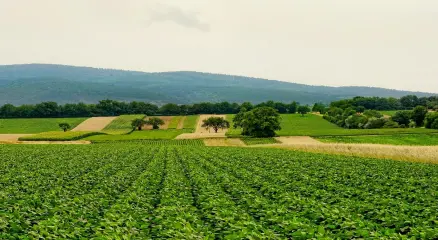
As the global population steadily climbs toward 9 billion, crop roduction has taken center stage in the fight to ensure food security and economic stability. In Bangladesh and around the world, farmers, scientists, and policymakers are working together to overcome environmental challenges and increase agricultural yields. Crop production—the process of growing food, fiber, and fuel crops—remains the backbone of agriculture. From rice and wheat to maize, potatoes, and oilseeds, these crops form the primary food source for billions. However, rising temperatures, erratic rainfall, and soil degradation are making traditional farming methods less effective. Climate Change Threatens Output Over the past decade, changing climate patterns have caused disruptions in planting and harvesting cycles. In many areas, floods and droughts have reduced yield per hectare. According to the Bangladesh Agricultural Research Council (BARC), rice yields have fluctuated by as much as 15% in recent years due to unpredictable weather. "This year alone, over 25% of the Boro paddy fields in northern districts faced water stress due to delayed rains," said Dr. Farzana Rahman, an agricultural scientist at BARI (Bangladesh Agricultural Research Institute). "We need to innovate faster than climate changes." Modern Techniques Take Root To combat these challenges, researchers are promoting climate-resilient varieties of crops and introducing precision agriculture technologies. These include the use of drones for field monitoring, satellite data for weather prediction, and automated irrigation systems to conserve water. In southern Bangladesh, for example, saline-resistant rice varieties have helped farmers maintain production levels despite rising sea levels and saline intrusion in the soil. Additionally, vertical farming, hydroponics, and integrated pest management (IPM) are slowly being adopted in peri-urban areas, particularly among younger agri-entrepreneurs. Government Push & Policy Support The government has also stepped in with targeted subsidies, smart card systems for fertilizer distribution, and minimum support prices (MSP) for key crops like rice and wheat."We are committed to ensuring that farmers have access to modern inputs, training, and markets," said Agriculture Minister Dr. Md. Abdul Karim. "Our goal is not just higher production, but sustainable, profitable farming." The National Agriculture Policy 2025 draft focuses heavily on encouraging crop diversification—moving away from rice-only cultivation toward higher-value crops like pulses, oilseeds, and vegetables, which not only improve soil health but also boost farmers' incomes. The Road Ahead Experts warn that without significant investment in agricultural research, extension services, and infrastructure (such as cold storage and rural roads), the gains in crop production may not be sustained. Additionally, smallholder farmers need better access to credit, insurance, and market linkages to remain competitive.Still, the future looks promising. With the integration of science, technology, and farmer-friendly policies, the journey toward a more productive and resilient agricultural sector is underway. Key Facts: Agriculture employs ~40% of Bangladesh's labor force. Rice contributes over 70% of total cereal production in the country. Climate-resilient crop varieties are increasing in adoption, especially in flood-prone and saline zones.
July 31, 2025

Global stock markets remained mixed today as investors weighed fresh U.S. inflation data, corporate earnings reports, and the ongoing economic uncertainty in China and Europe. The U.S. stock market opened slightly higher on Monday morning, with the Dow Jones Industrial Average rising 0.4%, the S&P 500 climbing 0.3%, and the Nasdaq Composite gaining 0.5% in early trading. Investors responded positively to June's U.S. Consumer Price Index (CPI) report, which showed inflation cooling slightly to an annual rate of 3.0%, down from 3.3% in May."Markets are optimistic that the Federal Reserve may pause or even cut interest rates by the fall," said Lisa Raymond, chief analyst at Morgan & Co. "But it's still a wait-and-see situation, especially with more earnings coming this week." Wall Street Opens Higher Dow +0.4%, S&P 500 +0.3%, Nasdaq +0.5% on Monday morning. Boosted by June CPI showing inflation cooled to 3.0% (down from 3.3%). Hopes rise for potential Fed rate cut or pause by fall. The U.S. stock market opened slightly higher on Monday morning, with the Dow Jones Industrial Average rising 0.4%, the S&P 500 climbing 0.3%, and the Nasdaq Composite gaining 0.5% in early trading. Investors responded positively to June's U.S. Consumer Price Index (CPI) report, which showed inflation cooling slightly to an annual rate of 3.0%, down from 3.3% in May. "Markets are optimistic that the Federal Reserve may pause or even cut interest rates by the fall," said Lisa Raymond, chief analyst at Morgan & Co. "But it's still a wait-and-see situation, especially with more earnings coming this week." Tech Leads the Way Technology stocks led the gains in the U.S., with Apple (AAPL) up 1.8% and Nvidia (NVDA) jumping 2.4%, as demand for AI and semiconductors remains strong. Tesla (TSLA) also rebounded, rising 3.1% after announcing better-than-expected Q2 vehicle deliveries. Global stock markets showed a mixed performance as investors weighed persistent inflation concerns against a wave of corporate earnings reports. While strong results from major tech companies helped lift some indexes, uncertainty surrounding central bank policies and the future path of interest rates kept others in check. In the U.S., Europe Struggles on Growth Concerns Meanwhile, European markets showed little movement, with the FTSE 100 in London flat and Germany’s DAX down 0.2%. Investors remain concerned about weak industrial output and rising energy costs across the Eurozone.“The European economy is showing signs of fatigue,” said Carla Dupont, economist at BNP Paribas. “High borrowing costs and geopolitical tensions are dragging down business activity.”Global stock markets showed a mixed performance as investors weighed persistent inflation concerns against a wave of corporate earnings reports. While strong results from major tech companies helped lift some indexes, uncertainty surrounding central bank policies and the future path of interest rates kept others in check. In the U.S., Market Performance Summary Table Region Index/Company Movement (%) Key Driver USA Dow Jones +0.4% Positive CPI report (3.0% inflation) S&P 500 +0.3% Rate cut optimism Nasdaq +0.5% Tech stock gains Apple (AAPL) +1.8% Strong AI demand Nvidia (NVDA) +2.4% Semiconductor growth Tesla (TSLA) +3.1% Strong Q2 deliveries Europe FTSE 100 (UK) 0.0% Flat due to economic uncertainty DAX (Germany) -0.2% Weak industrial output, high energy costs Asia Nikkei 225 (Japan) +0.6% Strong export performance Shanghai Composite -1.2% Property sector risks, low consumer spending Asia Mixed as Chinese Markets Slump In Asia, markets showed mixed results. Japan’s Nikkei 225 gained 0.6%, supported by strong export data. However, Chinese markets fell sharply, with the Shanghai Composite down 1.2%, as fears about the country’s property sector and sluggish consumer spending persisted. Gains in consumer and tech sectors pushed markets higher, but weaker-than-expected bank earnings and inflation-related jitters limited broader momentum. European markets edged lower as traders grew cautious about global trade tensions and slowing growth indicators, while Asian markets saw mixed results, with Hong Kong posting modest gains and Tokyo slipping slightly. Overall, market sentiment remains cautious as investors await further economic data and guidance from central banks. Looking Ahead Investors are now turning their focus to key corporate earnings this week from major banks like JPMorgan Chase, Goldman Sachs, and Citigroup, as well as tech giants like Netflix and Microsoft. The results are expected to provide a clearer picture of business resilience amid high interest rates and uncertain global demand. Overall, market sentiment remains cautious as investors await further economic data and guidance from central banks.
July 31, 2025


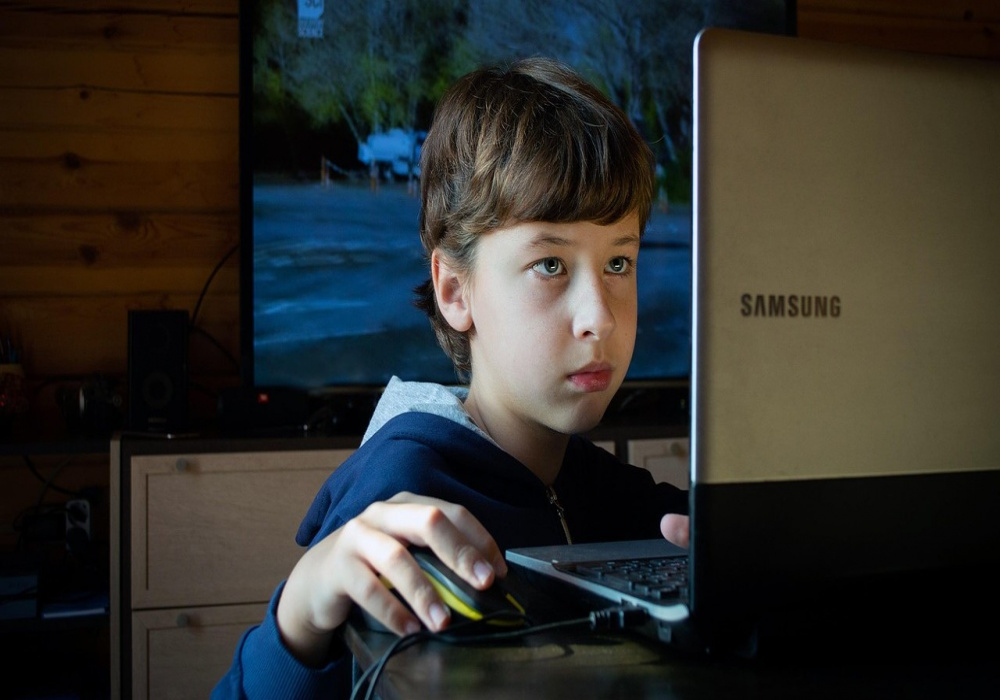
A major new international study has found a strong link between excessive screen time and mental health challenges in adolescents, including rising rates of insomnia, anxiety, and depression. The report, published by the Global Youth Wellness Foundation (GYWF), surveyed 72,000 teenagers aged 13 to 19 across 20 countries, including Bangladesh, the U.S., UK, and Japan. The study revealed that teenagers who spend more than 4 hours a day on social media or smartphones are twice as likely to report symptoms of poor sleep quality, mood swings, and lack of motivation. Digital Overload and the "Always-On" Culture "Teens today are exposed to a constant stream of notifications, comparisons, and content that overstimulates the brain," said Dr. Nafisa Chowdhury, lead researcher on the Bangladesh team. “It disrupts their sleep cycles, reduces face-to-face interactions, and fuels self-esteem issues.” Many teens reported checking their phones immediately before sleeping and even waking up at night to respond to messages or scroll through TikTok and Instagram. Mental Health Crisis in the Digital Age The study found: 34% of respondents reported signs of clinical depression 41% had trouble sleeping more than 3 nights a week 29% felt "chronically anxious" or socially disconnected Girls were more likely to report emotional distress linked to social media use In Dhaka, psychologists at private clinics say they’ve seen a threefold increase in teen patients over the past two years. What Experts Recommend Digital curfews: No screens 1 hour before bed App timers: Set daily limits for entertainment/social platforms Offline time: Encourage outdoor activities or family meals Mental health education: Include digital wellness in school curriculum Government Initiatives Underway In response to the growing concern, Bangladesh’s Ministry of Education is working with health officials to launch a "Safe Screens" campaign in schools, promoting healthy digital habits and offering workshops for both students and parents. “This is a national issue, and we must protect our next generation,” said Dr. Mostafa Kamal, advisor to the National Adolescent Health Program.
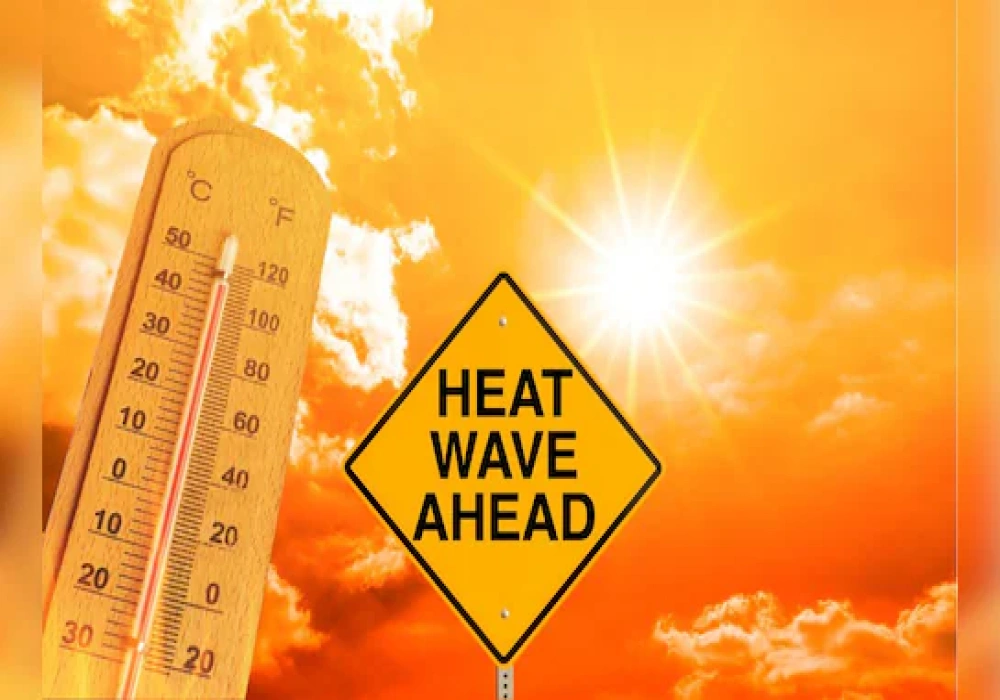
Hospitals across Asia, Europe, and parts of North America are reporting a sharp rise in heat-related illnesses as global temperatures reach record highs this July. Health authorities are issuing urgent heatwave warnings and advising people, especially the elderly and children, to take precautions as climate change fuels more extreme weather events. According to the World Meteorological Organization (WMO), over 60 countries have recorded temperatures above 42°C (107.6°F) in the last two weeks — the highest since 2019. Cities like Delhi, Dhaka, Cairo, and Phoenix are seeing emergency rooms fill up with patients suffering from heatstroke, dehydration, and cardiovascular strain. Vulnerable Populations at Risk The elderly, people with chronic diseases, outdoor workers, and those without access to cooling are especially vulnerable.“We are seeing a rise in severe dehydration, kidney problems, and even deaths due to prolonged heat exposure,” said Dr. Tahmina Rahman, Head of Emergency Medicine at Dhaka Shishu Hospital. In Bangladesh, at least 32 people have died due to heat-related complications in the last month alone, and over 1,500 patients have been treated for heat exhaustion across government hospitals. Governments Respond With Emergency Measures Countries are issuing heatwave alerts, distributing drinking water, and opening "cooling shelters" in public spaces. Bangladesh’s Ministry of Health has launched a hotline for emergency support and is advising schools to adjust class hours or shift to remote learning during extreme heat. “We are urging citizens to stay indoors during peak hours, wear light clothing, and stay hydrated,” said Dr. Abu Nasir, spokesperson for the DGHS. Experts say the current crisis is a warning of what’s to come if global warming is not addressed more aggressively. “Climate change isn’t just an environmental issue anymore — it’s a public health emergency,” warned Dr. Lin Zhang, a climate-health researcher at the University of Toronto. The UN Intergovernmental Panel on Climate Change (IPCC) predicts that by 2030, heatwaves could claim over 250,000 lives annually if current trends continue. What You Can Do: Avoid going out between 12 PM and 4 PM Drink 2.5–3 liters of water daily Use fans, cool cloths, or wet towels Never leave children or pets in parked vehicles Check on elderly neighbors or those living alone If you experience signs of heatstroke (dizziness, dry skin, rapid heartbeat), seek medical attention immediately.

The World Health Organization (WHO) has issued a warning about the sharp rise in lifestyle-related illnesses worldwide, calling for immediate action to combat what experts are calling a "silent epidemic" of preventable diseases. According to a 2025 Global Health Report released this week, non-communicable diseases (NCDs) such as diabetes, high blood pressure, obesity, heart disease, and depression are responsible for nearly 74% of all global deaths — a dramatic increase from previous years. A Crisis Fueled by Modern Living Experts blame modern lifestyles — including sedentary behavior, unhealthy diets, stress, lack of sleep, and excessive screen time — for the growing burden of NCDs. “People are moving less, eating more processed food, and living in high-stress environments,” said Dr. Maria Caruso, WHO’s Director of Global Wellness. “The result is a generation at greater risk of chronic illness at younger ages.” In Bangladesh, recent health data from the Ministry of Health and Family Welfare shows that over 12 million adults are living with diabetes, and cases of high blood pressure among people under 35 have nearly doubled since 2020. Mental Health Under Pressure Alongside physical health concerns, mental health remains a major issue. The pandemic's long-term effects, coupled with economic uncertainty and social media addiction, have driven a steep rise in anxiety and depression. A 2025 survey by BRAC Health found that 1 in 3 young people in urban Bangladesh experience moderate to severe stress, often linked to academic pressure, unemployment, and excessive smartphone use. “Increased screen time, disrupted sleep cycles, and a lack of outdoor activity are major contributors,” explained Dr. Rubina Haque, a psychologist at Dhaka Medical College Hospital. “Many young people are silently struggling.” New Push for Preventive Care In response to these trends, health authorities in many countries are shifting focus from treatment to prevention. Bangladesh’s government is launching new public awareness campaigns promoting physical activity, mental health checkups, and regular screenings for blood pressure and blood sugar. Several schools and workplaces are introducing mandatory fitness breaks, healthy canteens, and digital wellness programs aimed at reducing stress and encouraging healthier living. “Health is no longer just a hospital issue,” said Dr. Kamal Uddin, Director of Community Health at the Directorate General of Health Services (DGHS). “It’s a personal, family, and societal responsibility.” Tech and Telemedicine on the Rise Meanwhile, telemedicine and AI-powered health apps are making basic care more accessible. Platforms like Doctorola and Praava Health are helping patients connect with doctors online, order medicines, and monitor chronic conditions from home. Wearable devices, like smartwatches with health tracking, are also gaining popularity for real-time monitoring of heart rate, sleep, and stress levels. Looking Ahead As the world faces growing health threats — from poor lifestyle habits to environmental pollution — experts stress the importance of early education, community support, and government action. “If we don’t act now, we’ll have a future generation that’s sicker and more dependent on long-term treatment,” warned Dr. Caruso. “But with the right interventions, much of this is still preventable.”

A new study published this week in the British Journal of Sports Medicine reveals that walking just 30 minutes a day can significantly reduce the risk of developing chronic diseases such as heart disease, diabetes, and certain cancers. Researchers from King’s College London followed over 12,000 adults aged between 40 and 70 for a period of 10 years. The study found that those who engaged in brisk walking daily had up to a 25% lower risk of heart-related illnesses compared to those with a sedentary lifestyle. “Walking is one of the simplest and most accessible forms of physical activity, yet its benefits are profound,” said Dr. Amelia White, the lead author of the study. “Our research confirms that even moderate movement each day can have a powerful impact on long-term health.” Other Key Findings: Participants who walked in green or natural environments saw greater mental health improvements. Risk of Type 2 diabetes was reduced by 19% in regular walkers. Those who walked in groups had higher motivation to stay active. Participants who walked in green or natural environments saw greater mental health improvements. Risk of Type 2 diabetes was reduced by 19% in regular walkers. Those who walked in groups had higher motivation to stay active. A Global Trend Health experts worldwide are echoing the message, especially in urban centers where sedentary lifestyles are increasingly linked to health problems. The World Health Organization (WHO) recently emphasized physical activity as a top priority for improving global health outcomes. A new study published this week in the British Journal of Sports Medicine reveals that walking just 30 minutes a day can significantly reduce the risk of developing chronic diseases such as heart disease, diabetes, and certain cancers. Researchers from King’s College London followed over 12,000 adults aged between 40 and 70 for a period of 10 years. The study found that those who engaged in brisk walking daily had up to a 25% lower risk of heart-related illnesses compared to those with a sedentary lifestyle. “Walking is one of the simplest and most accessible forms of physical activity, yet its benefits are profound,” said Dr. Amelia White, the lead author of the study. “Our research confirms that even moderate movement each day can have a powerful impact on long-term health.” Public Health Response In response to the findings, the UK’s Department of Health and Social Care announced plans to launch a new campaign titled “Step Forward: 30 Minutes a Day” to encourage more people to incorporate walking into their daily routine. Dr. Amelia White, the lead author of the study. “Our research confirms that even moderate movement each day can have a powerful impact on long-term health.” A Global Trend Health experts worldwide are echoing the message, especially in urban centers where sedentary lifestyles are increasingly linked to health problems. The World Health Organization (WHO) recently emphasized physical activity as a top priority for improving global health outcomes.

Tourism Rebounds Strongly in 2025 as Travelers Seek New Adventures Post-Pandemic The global tourism industry has entered a period of remarkable recovery in 2025, following several years of pandemic-related disruption. With the lifting of most travel restrictions, renewed consumer confidence, and a deep craving for exploration, tourism has surged across continents. Experts say this rebound is not merely a return to old patterns, but a reshaping of how people travel, what they value, and how the industry responds. International Travel Reaches Record Levels Countries around the world have seen a significant rise in international arrivals. Popular destinations like France, Thailand, Italy, and Mexico are reporting visitor numbers that not only match but exceed pre-pandemic figures. Airports are bustling, cruise ships are sailing at full capacity, and global airlines have reinstated and even expanded routes. This surge is being driven by both leisure and business travelers eager to reconnect with the world. Tourists Demand Deeper, More Meaningful Experiences Travelers in 2025 are no longer satisfied with generic sightseeing tours. There is a growing demand for immersive experiences—whether it's living with a local family in a remote village, joining a traditional cooking class, or volunteering in conservation projects. This shift reflects a deeper desire for cultural understanding, personal growth, and making lasting memories, rather than just collecting passport stamps. Technology Transforms the Travel Experience Advancements in technology have revolutionized every stage of the travel journey. From AI-powered itinerary planners and mobile boarding passes to biometric check-ins and real-time translation apps, modern travelers are enjoying unprecedented convenience. Virtual reality previews and augmented reality tours are also helping travelers plan smarter and engage more deeply with destinations. Sustainability Becomes a Core Concern Post-pandemic travelers are more environmentally conscious than ever before. Eco-tourism has moved from niche to mainstream, with tourists choosing green-certified hotels, carbon offset flights, and low-impact transport options. Many are also seeking out destinations that emphasize environmental protection, wildlife preservation, and sustainable development. Tour operators and governments are responding by investing in responsible travel infrastructure and education. Flexible Booking and Safety Measures Still Matter Despite the easing of global health threats, travelers remain cautious. Flexible booking policies, free cancellations, and comprehensive travel insurance are considered essential. Tourists also favor destinations with clear safety protocols and reliable healthcare systems. These preferences are shaping the policies of airlines, hotels, and tour agencies, which now compete not only on price and location but on traveler assurance. Domestic and Regional Tourism Remains Strong While international travel has boomed, domestic tourism has also seen steady growth. Many travelers are discovering hidden gems within their own countries—national parks, cultural heritage sites, and lesser-known towns—thanks to local government campaigns and improved transportation networks. Weekend getaways, road trips, and regional cruises are more popular than ever, helping stimulate local economies and reduce pressure on overcrowded hotspots. Travel Trends Are Redefining Industry Standards. From "workcations" that blend business with leisure to solo female travel and multi-generational family trips, the diversity of travel preferences is expanding. Social media continues to influence destination choices, while personalized travel experiences—tailored by data and AI—are raising expectations across the industry. The result is a tourism ecosystem that is more agile, inclusive, and innovative.

Why Train Travel Is the Future of Sustainable Tourism In the face of growing environmental concerns and a global push for greener alternatives, train travel has emerged in 2025 as one of the most promising solutions for sustainable tourism. With lower emissions, rising consumer interest in eco-conscious travel, and significant investment in modern rail infrastructure, trains are redefining the way people explore the world. More than a nostalgic throwback, rail journeys today offer comfort, speed, and environmental responsibility—qualities that align with the values of the modern traveler. Here are the key reasons why train travel is gaining momentum as the future of sustainable tourism: Lower Carbon Emissions and Environmental Impact Trains produce significantly fewer greenhouse gas emissions compared to airplanes or cars. Electric and high-speed rail systems, now common in many parts of Europe and Asia, offer one of the cleanest forms of long-distance transportation. As climate change concerns grow, both tourists and governments are recognizing rail’s role in reducing the carbon footprint of global travel. Train stations are often located in the heart of cities and towns, directly connecting tourists with local businesses, markets, and attractions. This helps distribute tourism income more evenly—particularly to smaller or rural communities that are bypassed by major airlines. The result is a more inclusive, grassroots tourism model that benefits a wider range of people. Expansion of High-Speed Rail Networks Countries around the world are heavily investing in high-speed rail infrastructure. Networks connecting major cities and even cross-border regions are making train travel faster and more convenient than ever. In many cases, high-speed trains now rival or outperform air travel when total journey time—including airport transfers and security—is considered.Trains offer a slower, more mindful travel experience, allowing passengers to enjoy scenic routes, changing landscapes, and cultural transitions along the way. Unlike flights, which are often stressful and rushed, rail journeys provide spacious seating, onboard amenities, and uninterrupted views, turning the journey itself into part of the adventure. Technological Advancements Enhance the Journey Modern rail travel is enhanced by digital ticketing, real-time updates, mobile booking apps, and AI-powered route planning. Wi-Fi connectivity and smart onboard systems are turning trains into fully connected environments that suit the needs of both leisure and business travelers. These innovations help make train journeys smoother, safer, and more enjoyable. Today’s travelers—especially younger generations—are more environmentally and socially conscious. Many actively choose lower-emission options and seek authentic, slower-paced experiences that align with their values. Trains match this shift in mindset, offering a responsible way to explore the world without sacrificing comfort or convenience. In Summary Train travel in 2025 is no longer just a practical alternative—it is a symbol of the tourism industry's transformation toward sustainability. With growing awareness of climate change, advancements in rail technology, and a collective desire for meaningful, lower-impact journeys, trains are on track to become the preferred mode of travel for the environmentally responsible tourist. As the world looks toward greener horizons, the rails are leading the way.
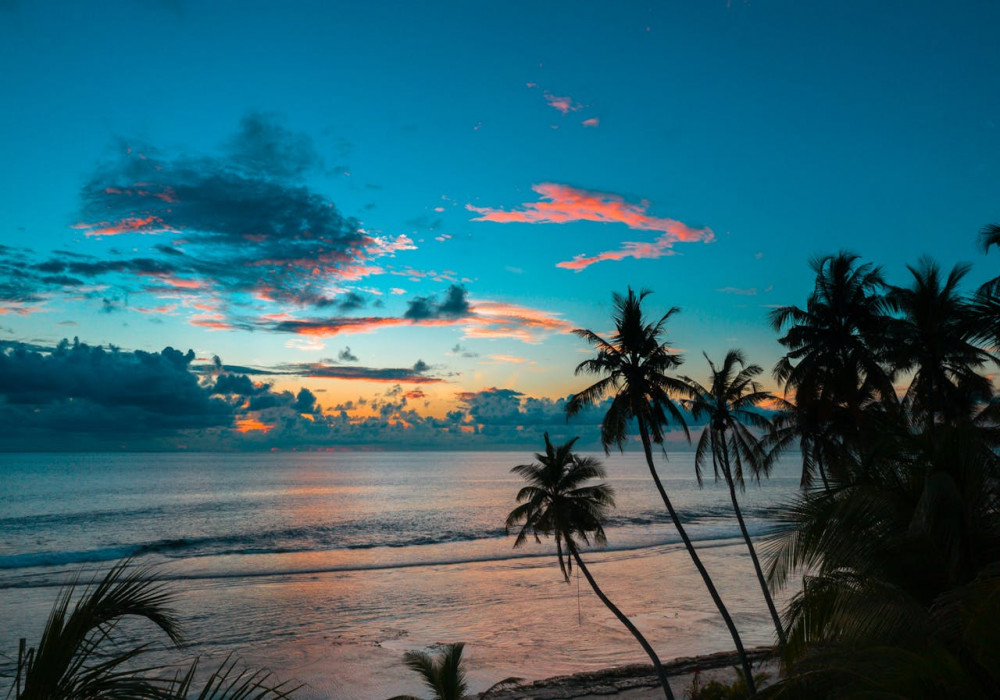
Hidden Gems in Southeast Asia You’ve Never Heard Of While millions flock to Southeast Asia every year to explore tourist magnets like Bali, Bangkok, and Halong Bay, the region also hides a treasure trove of lesser-known destinations waiting to be discovered. In 2025, as more travelers seek authentic, off-the-beaten-path experiences, these hidden gems are gaining quiet popularity. These spots offer untouched landscapes, rich local cultures, and fewer crowds—ideal for travelers craving depth, solitude, and meaningful adventures. Here are some of Southeast Asia’s best-kept secrets that deserve a place on your next itinerary: Ban Gioc Waterfall, Vietnam Tucked away on the northern border of Vietnam, Ban Gioc Waterfall is one of the most breathtaking natural wonders in Asia—yet remains largely unknown to international tourists. Surrounded by lush limestone mountains and rice paddies, this massive waterfall straddles the border with China and offers a peaceful, untouched atmosphere. Visitors can take bamboo rafts near the base, explore nearby caves, and immerse themselves in the slow-paced rural life of Cao Bang Province. While Langkawi and Penang steal the spotlight, Bagan Lalang is a serene coastal village just an hour from Kuala Lumpur that offers calm beaches, seafood feasts, and spectacular sunsets without the tourist crowds. It’s the perfect weekend escape for travelers seeking local charm and affordable luxury. The overwater villas here provide a unique stay experience, and nearby mangrove forests offer eco-tourism activities like kayaking and birdwatching. Champasak, Laos Nestled along the Mekong River in southern Laos, Champasak is a tranquil town rich in history and spiritual beauty. Home to the ancient Khmer temple complex of Wat Phou—a UNESCO World Heritage Site often compared to Angkor Wat but with far fewer tourists—Champasak offers a unique window into Southeast Asia’s pre-Angkorian past. The town is also known for its French colonial architecture, riverside cafes, and laid-back pace of life. Often overshadowed by Boracay and Palawan, Siquijor is a mystical island in the central Philippines famous for its folklore, healing traditions, and crystal-clear waters. With hidden waterfalls, white-sand beaches, coral reefs, and firefly-filled mangrove forests, the island offers a magical blend of nature and local legend. Visitors can snorkel, motorbike across the island, or even visit traditional healers known as “mambabarang.” Tumpak Sewu, Indonesia Often called the “Niagara Falls of Indonesia,” Tumpak Sewu is a stunning horseshoe-shaped waterfall located in East Java, surrounded by jungle cliffs and volcanic terrain. Unlike the more visited Mount Bromo or Bali beaches, this hidden paradise requires a trek through dense forest and river crossings—making the reward even more satisfying. It’s ideal for adventurers, photographers, and anyone wanting to experience Indonesia’s raw natural power up close. Located at the southernmost tip of Myanmar, Kawthoung is a quiet port town and the gateway to the unspoiled Mergui Archipelago—an island chain of over 800 largely untouched islets. The area is ideal for sailing, diving, and discovering secluded beaches that feel truly remote. With few visitors and an emerging eco-tourism scene, Kawthoung remains one of the last frontiers for explorers looking for solitude and oceanic beauty. In Summary Southeast Asia continues to surprise travelers with its diversity, depth, and hidden wonders. As the travel landscape evolves, these lesser-known destinations are proving that you don’t need crowds or famous landmarks to have an unforgettable experience. Whether you're seeking nature, culture, adventure, or reflection—these secret spots offer the essence of Southeast Asia in its purest, most authentic form.

The Smart Way to See the World: How AI Is Revolutionizing Travel In an age where time is precious and wanderlust runs deep, artificial intelligence (AI) is becoming the ultimate travel companion. Gone are the days of juggling dozens of browser tabs, flipping through outdated guidebooks, or relying on guesswork. In 2025, planning a trip is as effortless as asking the right question—and letting AI do the rest. From the way we search for destinations to how we experience them in real time, AI is reshaping travel into something smarter, faster, and deeply personal. Here’s how it’s changing the game: Personalized Planning at Lightning Speed AI takes your travel preferences—budget, travel style, past trips, and even your online behavior—and instantly curates custom itineraries. Whether you're a solo backpacker or a family planner, platforms like Google Travel and Hopper analyze real-time data to recommend the best times to fly, where to stay, and what to do—tailored just for you. Need to change a flight, book a last-minute hotel, or file a baggage complaint? AI-powered chatbots now handle customer service around the clock—no more hold music or call center frustration. These virtual agents respond in seconds, speak your language, and are trained to solve real issues efficiently. Seamless Experiences Beyond Booking AI continues to assist even after you’ve boarded the plane. From live translation apps and AR-guided tours to facial recognition at airports, tech-enhanced journeys are smoother and more immersive. Your smartphone becomes your personal concierge, navigator, and translator—all powered by intelligent systems. While AI makes travel more efficient, it hasn’t replaced the value of human intuition. For complex trips or once-in-a-lifetime experiences, many still trust human travel advisors. But for most travelers, AI offers freedom from stress and planning fatigue—without losing the joy of discovery. The Future Is Here AI isn’t just helping us travel—it’s redefining how we connect with the world. With smart tools at your side, the hardest part of your next adventure might just be deciding where to go.

They say some places feel like a dream even when you’re wide awake—and for me, Cappadocia, Turkey was exactly that. From the moment I arrived in the quiet town of Göreme, nestled among soft volcanic rock formations, I knew this trip would be different. Not rushed. Not crowded. Just deeply personal and soul-refreshing. And it started—quite literally—with a hot air balloon ride at dawn. A Sky Full of Magic Waking up at 4:30 a.m. wasn’t easy, but the silence of the pre-sunrise sky made every yawn worth it. As our balloon gently rose, the horizon began to blush with orange and pink. Below us, hundreds of fairy chimneys, ancient caves, and rock-carved churches glowed in soft morning light. And above? Dozens of other balloons floated quietly—no noise, no chaos, just the soft sound of wind and the occasional whoosh of fire. It wasn’t a ride—it was meditation in the sky. Underground Cities & Ancient Souls Later that day, I explored Derinkuyu, one of Cappadocia’s underground cities, stretching nearly 200 feet deep. Walking through narrow tunnels and ancient ventilation shafts, I imagined how thousands once hid here during invasions. There’s something humbling about standing in a place where people lived, survived, and prayed without sunlight—yet with hope. Staying in a Cave Hotel (Yes, Really) What made my trip even more surreal was sleeping in a cave. I stayed at a cozy cave hotel with stone walls, warm lighting, and a rooftop terrace perfect for stargazing. The temperature inside was always cool, even when the sun baked the valley outside. At night, sipping Turkish tea under a sky full of stars and the silhouette of mountains in the distance—I felt completely present. No noise. No notifications. Just peace. Food, People, and Unexpected Moments The people of Cappadocia are gentle and proud of their heritage. Every shop owner I met shared a story—about how their family carved stones, or grew apricots in the valley. I ate manti (Turkish dumplings), sipped apple tea, and tried testi kebab—a meat stew cooked inside a clay pot, which the waiter cracked open right in front of me with a tiny hammer.Every meal felt like a celebration, even when I was alone. Why You Should Go Cappadocia isn’t a place for flashy travel photos—although it’s impossible to take a bad one. It’s a place for quiet joy, ancient echoes, and reconnecting with the part of you that wants to slow down. If you’ve been looking for a sign to disconnect from the digital world and lose yourself in the sky, in history, and in simple human connection—this is it. Travel Tips: Best time to visit: April–June or September–October (less heat, fewer crowds) Bring warm clothes for early mornings—even in summer Book balloon rides in advance—they sell out fast! Try to stay in Göreme or Ürgüp for the best cave hotel experience Final Thought: Cappadocia didn’t just give me a vacation. It gave me stillness, wonder, and a reminder that the world is wide—and we are small, but blessed to explore it.
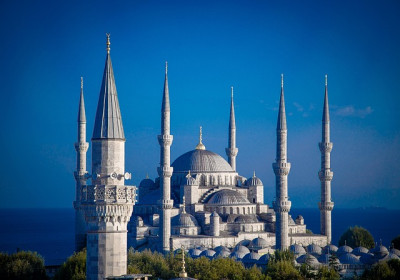
There are some places in the world that don’t look real — where landscapes feel borrowed from dreams and time flows a little slower. Cappadocia, in the heart of Turkey, is one such magical land. Last month, I had the chance to spend a few days exploring its surreal valleys, ancient cave dwellings, and colorful skies, and I’m still not over it. 🎈 Sunrise in the Sky: The Iconic Hot Air Balloon Ride Waking up at 4:30 a.m. may not sound fun on a vacation, but trust me, it’s worth it. As we ascended gently in our hot air balloon, the sky transformed into a canvas of pinks and golds. Floating above the fairy chimneys and undulating hills of Göreme was an experience I’ll never forget. It's quiet up there — almost sacred. No noise, no rush, just the gentle whoosh of the burner and the feeling of absolute freedom. 🏞️ Exploring the Valleys on Foot After touching down, I hiked through the Rose Valley and Love Valley. These trails are beginner-friendly but still feel like real adventures. Sculpted over millennia by wind and rain, the rock formations are almost otherworldly. Along the way, I stumbled upon centuries-old churches carved into cliffs, complete with faded frescoes — living proof of Cappadocia’s deep Christian history. 🏠 Sleeping in a Cave Hotel Yes, it’s as cool as it sounds! I stayed at a cave hotel in Uçhisar, where modern luxury meets ancient architecture. Thick stone walls kept the room cool, and I loved the cozy, candle-lit ambiance. At night, I’d sit on the terrace sipping Turkish tea, watching stars scatter across the sky — the kind of peaceful moment that stays with you long after you’ve gone. 🍽️ Food for the Soul Turkish cuisine is an adventure in itself. Every meal was a celebration — from slow-cooked Testi Kebab served in a clay pot to sweet, flaky baklava and rich, foamy Turkish coffee. Don’t miss trying the local wines either; Cappadocia is a hidden gem for wine lovers. 🛍️ Little Things, Big Memories On my last day, I wandered through Avanos, a town known for its pottery. I took a pottery class and made a (slightly lopsided) vase. It wasn’t perfect, but it’s now my favorite souvenir — a reminder that travel isn’t always about ticking off famous sights. It’s about stories, people, and little imperfect moments that turn into perfect memories. ✈️ Final Thoughts If you’re dreaming of a destination that feels like another planet, that feeds your soul and slows down time, Cappadocia is calling. Whether you’re traveling solo, with a loved one, or with friends, this Turkish gem promises an unforgettable experience.

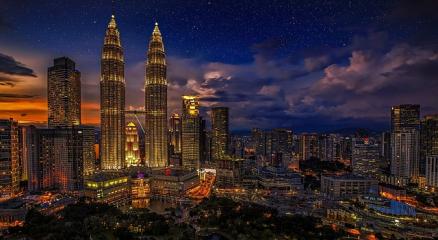



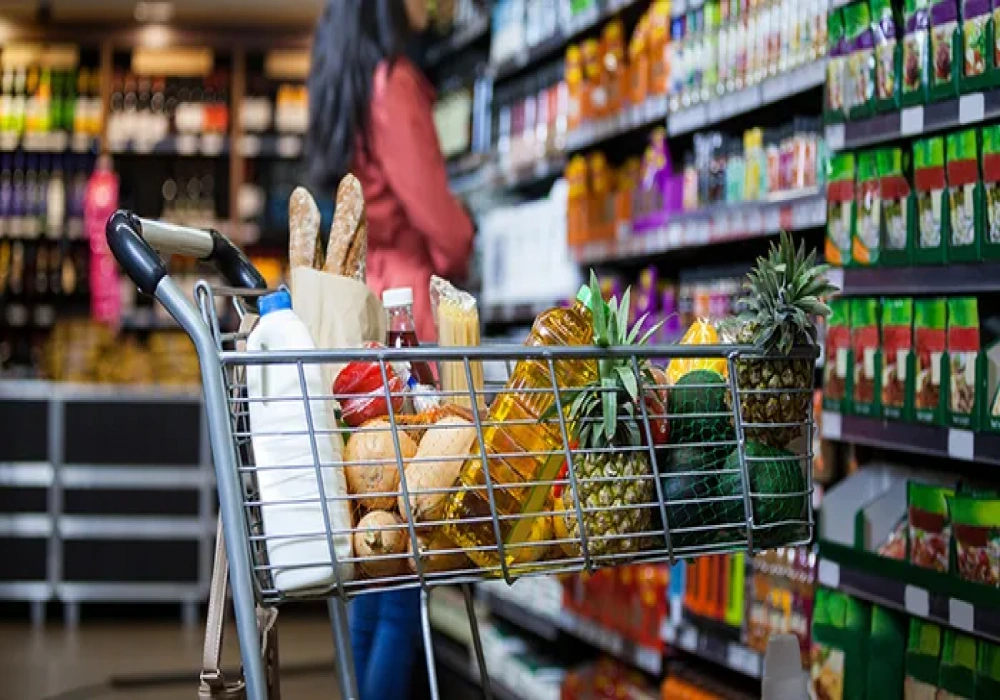
As grocery bills climb to record highs across continents, families are being forced to make painful choices. From Dhaka to Detroit, rising food prices have become a universal hardship, driven by a tangled web of global supply chain bottlenecks, extreme climate events, and geopolitical turmoil. Recent figures from the United Nations Food and Agriculture Organization (FAO) show that global food prices have risen nearly 23% year-over-year, marking one of the sharpest spikes in over a decade. Essential staples such as rice, wheat, cooking oil, and dairy are at the center of the storm, with developing economies bearing the worst of the impact. Food Inflation Snapshot: Category-Wise Price Surge Food Category Avg. Global Price Increase (12 Months) Key Drivers Grains (Rice, Wheat) +18% War in Ukraine, export bans Vegetables +25% Floods, droughts, labor shortages Dairy Products +15% High feed prices, energy costs Meat (Beef, Poultry) +22% Feed supply shortage, transport delays Cooking Oil +30% Indonesia’s ban, climate disasters What’s Causing the Crunch? 1. Supply Chain Disruptions COVID-19 aftershocks are still rippling through global logistics. Freight backlogs at ports, lack of refrigerated containers, and strikes among transport workers have delayed food delivery worldwide. “Even if you have food ready to ship, getting it from farm to table is twice as expensive and twice as slow,” says Prof. Arun Mitra, an economist at the University of Melbourne. 2. Geopolitical Tensions The Russia–Ukraine war has disrupted grain exports from two of the world’s largest producers. Together, they account for over 30% of the global wheat supply. Trade sanctions and naval blockades have further restricted shipments. Meanwhile, India’s curbs on rice exports to control domestic prices have squeezed markets across Africa and Southeast Asia. 3. Climate Change and Natural Disasters Flooding in Pakistan and Bangladesh wiped out rice and vegetable crops. Droughts in the Horn of Africa and heatwaves in Europe and Canada reduced wheat and maize yields. Wildfires in South America damaged farmland and disrupted coffee and soybean supply chains. 4. Currency Depreciation For many nations, the value of local currency has plummeted against the US dollar, making food imports even more expensive. In Bangladesh, the taka has lost nearly 18% of its value in two years, making oil, lentils, and dairy imports costlier than ever before. On the Ground: How Families Are Coping Rokeya Begum, a 39-year-old garment worker in Narayanganj, says, “Last year, I could afford fish three times a week. Now it’s once, maybe twice. Eggs and vegetables are also becoming luxuries.” In the U.S., middle-class families are increasingly relying on bulk-buying clubs and discount stores, while food bank demand is up 27% from the previous year. Across Africa, millions face the risk of acute food insecurity, with humanitarian agencies calling for urgent international aid. According to World Food Programme (WFP), over 345 million people globally are now experiencing "acute hunger", up from 282 million last year. What’s Being Done? Food subsidies in countries like Egypt, Indonesia, and Bangladesh. Price caps on essentials like onions, flour, and edible oils. Cash support to vulnerable families via mobile wallets. Investing in climate-resilient agriculture. Building regional food reserves to withstand export shocks. Strengthening infrastructure for cold chains and food storage. Diversifying trade routes and food sources. Expert Voices “Without bold reforms and global coordination, we risk food inflation becoming the new normal,” says Dr. Momena Alam of BRAC University’s Food Security Research Centre. “Poorer nations will suffer disproportionately. We must treat food not just as a market product but as a human right,” adds David Nabarro, WHO Special Envoy on Food Systems. The Road Ahead: Key Questions Will weather conditions stabilize in key growing regions? Can trade wars and protectionism be dialed back? How fast can logistics networks be rebuilt? Will richer nations support the food needs of vulnerable economies? Until these answers emerge, global households will continue to face a painful question at the checkout counter: How much food can I afford today?

As the United States grows more culturally diverse, so too does its taste in food. From the streets of New York City to the suburbs of Texas and the coasts of California, Americans are embracing a new era of global cuisine, turning everyday dining into a cultural experience that reflects the country’s expanding multicultural identity. Driven by immigration, international travel, and a digitally connected generation of food lovers, the American food landscape is becoming a vibrant melting pot of flavors, ingredients, and cooking techniques. Dishes once considered exotic — like Korean bibimbap, Ethiopian injera, Peruvian ceviche, or Filipino adobo — are now readily available in mainstream supermarkets, food trucks, and upscale restaurants alike. According to a 2025 report by the National Restaurant Association, more than 68% of Americans say they regularly try foods from different cultures, and 4 out of 5 restaurants in major cities now offer menus that include international items or fusion dishes. This surge of interest in global flavors is reshaping the way food is prepared, marketed, and enjoyed in the U.S. Chef Marcus Legrand, a James Beard Award winner and owner of “Gathered Table” in Los Angeles, says the change is not just about taste, but about connection. “People want to eat stories now,” he says. “When they bite into Thai curry or West African jollof rice, they’re connecting with a culture, a history — it’s not just food, it’s a journey.” Streaming platforms, food blogs, and social media influencers are also accelerating this trend. Shows like Chef’s Table and Street Food on Netflix have introduced global cuisines to millions of viewers, while TikTok and Instagram are filled with short, viral videos that celebrate everything from Japanese bento boxes to Turkish street kebabs. Restaurants and food entrepreneurs are adapting quickly. Ghost kitchens — delivery-only food businesses — are now launching entire brands around niche global dishes like Vietnamese pho, Jamaican jerk chicken, or Malaysian laksa. At the same time, grocery stores are expanding their international sections to include a wider variety of spices, sauces, and ready-made meals from Asia, Africa, Latin America, and the Middle East. Health and sustainability are also influencing the movement. Many global diets are plant-forward, rich in whole grains, legumes, vegetables, and natural oils. As Americans grow more conscious of health and climate change, traditional Mediterranean, Japanese, and South Indian meals are gaining recognition for being both nutritious and environmentally sustainable. However, with the excitement also comes responsibility. Cultural appropriation in food — when recipes or cuisines are taken without respect or acknowledgment of their origins — remains a sensitive topic. Many chefs and restaurateurs are emphasizing authenticity, collaboration, and credit, working directly with immigrant communities to honor and elevate their culinary heritage. Food festivals, pop-up events, and cross-cultural collaborations are becoming key ways to celebrate this diversity. Events like the New York City International Food Bazaar or the Taste of Nations Festival in Chicago bring together chefs, home cooks, and families from around the world to share food, stories, and community. As the American palate continues to expand, experts say global cuisine is no longer a trend — it's the new normal. What was once labeled “ethnic food” is now simply food. In this age of openness and exploration, the future of food in America looks deliciously diverse — a reflection not just of what we eat, but of who we are.

In recent years, the farm-to-table movement has gained powerful momentum across the United States, transforming how restaurants source their ingredients and how consumers think about their meals. What began as a niche trend in a few organic cafés has evolved into a widespread commitment to local, seasonal, and sustainable food sourcing—one that’s influencing both urban eateries and rural diners alike. Farm-to-table, also known as “farm-to-fork,” emphasizes the use of fresh, locally grown produce, meats, and dairy directly sourced from farmers, ranchers, and artisanal producers. The goal is simple: to shorten the supply chain, reduce the carbon footprint of food transportation, and ensure the highest quality ingredients reach the plate. Cities like Portland, Austin, and San Francisco have become leading hubs of this movement, with restaurants highlighting the origins of their ingredients on menus. Diners are increasingly choosing establishments that value transparency, ethical farming practices, and seasonality. From small bistros to fine-dining institutions, chefs are building relationships with local growers and crafting menus that change weekly or even daily depending on what’s available. Chef Rachel Dawson, owner of “Meadow & Mill” in Vermont, explains the appeal: “When I plan a menu, I don’t start with recipes. I start with what the farmers have picked that morning. That’s the beauty of it—freshness you can taste, and a connection to the land that’s becoming rare in today’s food system.” Beyond taste and ethics, the movement is also tied to health. Studies show that locally grown fruits and vegetables tend to retain more nutrients due to shorter transportation and storage times. Without the need for chemical preservatives or artificial ripening agents, the food remains closer to its natural state, appealing to health-conscious eaters.The COVID-19 pandemic further accelerated the trend as supply chain disruptions made consumers and restaurants alike more aware of the vulnerabilities of global food logistics. During lockdowns, many turned to local farms, community-supported agriculture (CSA) boxes, and farmers’ markets for their food needs. That momentum has carried over into 2025, with more restaurants committing to long-term partnerships with local producers. Government support has also played a role. Several states now offer grants and incentives for restaurants that source ingredients locally, while educational institutions and hospitals are increasingly adopting farm-to-school and farm-to-institution models. These programs not only benefit public health but also provide economic support to small and mid-sized farmers. However, the movement is not without challenges. Weather variability, limited supply during off-seasons, and higher costs can make it difficult for some restaurants to maintain a fully local menu. But many chefs view these challenges as opportunities for creativity. Winter menus may feature preserved vegetables, pickled goods, and root crops, while summer menus highlight berries, tomatoes, and fresh herbs. Consumers, too, are becoming more flexible and educated about seasonality. The expectation of year-round strawberries or imported avocados is gradually giving way to excitement about what’s in season and grown close to home. Food bloggers, nutritionists, and influencers are playing a major role in promoting this shift in food culture. As the farm-to-table philosophy continues to spread, it is influencing everything from school lunches to corporate cafeterias. Experts believe the movement will play a key role in building a more sustainable, resilient, and health-focused food system for the future. Whether you’re dining out or cooking at home, the next time you bite into a crisp apple or a farm-fresh egg, you might just be tasting the future of American food.

Across the United States, the culinary landscape is experiencing a dynamic transformation fueled by a growing interest in exotic foods and ingredients from every corner of the globe. This trend is reshaping menus in restaurants, inspiring home cooks, and encouraging chefs to experiment with bold new flavors that excite the adventurous American palate. In major cities like New York, Los Angeles, and Miami, diners are increasingly seeking out unique culinary experiences that introduce them to ingredients and dishes they may never have encountered before. Exotic foods such as sea cucumbers, jackfruit, edible flowers, and fermented delicacies are no longer niche items but are becoming popular staples in many trendy eateries. One notable example is the rise of jackfruit as a versatile plant-based meat alternative. Native to South and Southeast Asia, jackfruit’s texture and ability to absorb spices make it a popular substitute in vegan and vegetarian versions of traditional meat dishes like pulled pork sandwiches and tacos. Its popularity has surged due to growing consumer awareness of plant-based diets and sustainability concerns. Fermented foods, long celebrated in many Asian and European cultures, are also gaining ground in the U.S. market. Items like kimchi, natto, and miso are prized for their health benefits, particularly for gut health, and are now common in fusion dishes and health-conscious menus. Restaurants often feature kimchi fried rice, miso-glazed fish, and natto-inspired sauces, blending tradition with modern culinary innovation. Edible flowers and herbs are another exotic trend adding color and aroma to dishes. Flowers like nasturtiums, violets, and marigolds are used to garnish salads, desserts, and cocktails, elevating the dining experience visually and gastronomically. Mixologists have also embraced exotic botanicals to create unique flavor profiles in craft cocktails. Seafood lovers are exploring exotic species such as octopus, sea urchin, and abalone, which are prized for their delicate flavors and textures. These ingredients are often featured in high-end sushi bars and seafood restaurants, attracting diners eager to try luxurious and uncommon delicacies. Food festivals celebrating international cuisine have become platforms for showcasing exotic food trends. Events such as the “Global Taste Fest” in Los Angeles highlight dishes from Africa, South America, and Asia, giving Americans a chance to experience authentic flavors prepared by chefs from those regions. These festivals foster cultural appreciation and promote the diversity of the American food scene. Despite the excitement around exotic foods, experts caution that consumers should be mindful of sourcing and preparation. Sustainable harvesting and ethical practices are critical to ensuring these ingredients remain available without harming ecosystems. Moreover, proper preparation is necessary to ensure safety, as some exotic foods require special handling or cooking techniques. Retailers have responded to demand by expanding the availability of exotic ingredients through specialty markets and online stores. This accessibility enables home cooks to experiment with recipes inspired by global cuisines, further integrating exotic foods into everyday American cooking. The enthusiasm for exotic foods aligns with broader trends emphasizing culinary adventure, wellness, and sustainability. As Americans continue to explore new tastes and traditions, the food industry is poised to innovate, blending heritage with contemporary preferences to create exciting new dining experiences. For those eager to try exotic foods, food experts recommend starting with small portions and trusted establishments that prioritize quality and authenticity. Cooking classes and cultural food tours can provide valuable insights into the origins and proper preparation of these ingredients, making the culinary journey both enjoyable and educational.As the appetite for exotic foods grows, the American culinary scene will likely become even more vibrant and diverse, offering endless opportunities for discovery and enjoyment.

In recent years, American food lovers have been embracing an ever-growing fascination with exotic and unusual foods from around the world. From edible insects to rare fruits and unique seafood delicacies, adventurous diners in cities across the United States are seeking out new flavors and culinary experiences that challenge the traditional palate. Restaurants specializing in exotic cuisine have been popping up in metropolitan areas such as New York, Los Angeles, Miami, and Chicago, attracting food enthusiasts eager to try dishes that go beyond the familiar. According to a recent survey by the National Restaurant Association, nearly 40% of American diners say they are willing to try exotic foods at least once a year, and that number has steadily increased over the past decade. One of the most talked-about trends is the inclusion of insects, often referred to as “entomophagy,” in gourmet dishes. Crickets, mealworms, and grasshoppers are being incorporated into protein bars, snacks, and even fine dining menus. Nutritionists praise insects for their high protein content, sustainability, and low environmental impact compared to traditional livestock. Chefs like Alex Gomez of “Bug Bistro” in San Francisco have been pioneering creative recipes such as cricket flour pancakes and roasted grasshopper tacos, which are surprisingly well received. Exotic fruits and vegetables have also gained popularity among health-conscious consumers. Ingredients like dragon fruit, durian, rambutan, and black garlic are making their way into smoothies, salads, and sauces. These ingredients are not only valued for their unique flavors but also for their high antioxidant and vitamin content. Specialty grocery stores and farmers’ markets now regularly stock these items, making them more accessible to the average consumer.Seafood lovers are discovering unusual catches such as sea urchin, geoduck clam, and monkfish liver, often regarded as delicacies in Asian and European cuisines. High-end sushi restaurants are especially known for featuring these rare ingredients, drawing patrons willing to pay premium prices for an authentic taste of the exotic. The growing curiosity about global flavors has also spurred the rise of fusion cuisine, where chefs blend traditional recipes from different cultures to create innovative dishes. For instance, Korean-Mexican tacos and Indian-Italian pizzas are delighting customers with bold, unexpected flavor combinations.Food festivals celebrating exotic ingredients have become increasingly popular. Events like the “Exotic Eats Festival” in Miami showcase chefs and vendors who offer tastings of unusual dishes from across the globe. These festivals not only introduce people to new foods but also educate them about cultural traditions and sustainable food practices. While many consumers are eager to experiment, some express concerns about food safety and ethical sourcing. Experts emphasize the importance of ensuring that exotic ingredients are harvested sustainably and prepared hygienically to avoid health risks. Regulatory bodies are beginning to establish clearer guidelines to help both consumers and businesses navigate this emerging market. The fascination with exotic food reflects a broader trend toward culinary exploration and cultural exchange. As global travel resumes and digital media exposes people to diverse cuisines, the American dining scene continues to evolve with exciting new tastes. For adventurous eaters wanting to try exotic foods, experts recommend starting with well-reviewed restaurants and specialty food shops that source ingredients responsibly. Cooking classes and food tours are also popular ways to learn about preparation techniques and cultural contexts behind these unique dishes. With interest in exotic food showing no signs of slowing down, chefs and food entrepreneurs are likely to keep pushing the boundaries of flavor, creating an ever-more diverse and exciting culinary landscape in the United States.
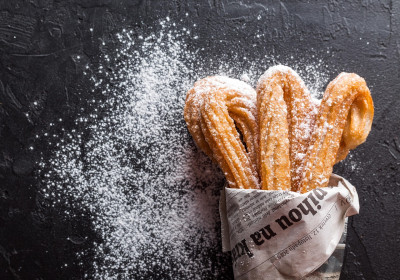
In recent years, the United States has seen a remarkable surge in the popularity of plant-based foods, driven by growing consumer interest in health, sustainability, and ethical eating. From plant-based burgers to dairy-free cheeses, grocery store aisles and restaurant menus across the country are rapidly expanding their offerings to meet this rising demand. According to market research firm Nielsen, sales of plant-based foods increased by nearly 30% over the past two years, far outpacing the growth of traditional animal-based products. This trend is not limited to vegetarians and vegans alone; many meat-eaters are now adopting “flexitarian” diets that include more plant-based meals for health reasons. Experts attribute this shift to several factors. Health concerns top the list, as studies link excessive consumption of red and processed meats to heart disease, cancer, and other chronic illnesses. In addition, awareness about the environmental impact of livestock farming—such as greenhouse gas emissions, water use, and deforestation—has prompted consumers to seek more sustainable food choices. Restaurants have been quick to respond. Major chains like Burger King, McDonald’s, and KFC now offer plant-based alternatives, often partnering with companies such as Beyond Meat and Impossible Foods to develop burgers that closely mimic the taste and texture of beef. These products have attracted widespread attention, not only from consumers but also from investors eager to capitalize on the booming market. Local eateries and gourmet restaurants have embraced plant-based cooking as well, creating innovative dishes using ingredients like jackfruit, tofu, tempeh, and lentils. Chef Amanda Lee of the popular vegan restaurant “Green Table” in Seattle explains, “We focus on making plant-based food exciting and delicious, breaking the stereotype that vegetarian food is bland or boring. Our customers come for the flavors but stay for the health benefits.” The dairy industry is also witnessing transformation. With rising lactose intolerance awareness and vegan preferences, sales of almond milk, oat milk, and other dairy alternatives have skyrocketed. Supermarkets have expanded their selections beyond milk to include plant-based yogurts, creams, and cheeses. Despite the enthusiasm, some critics argue that processed plant-based products can be high in sodium and additives, warning consumers to read labels carefully. Nutritionists recommend balancing these alternatives with whole foods like fruits, vegetables, grains, nuts, and seeds to ensure a healthy diet. Government agencies and health organizations have taken note of the trend. The U.S. Department of Agriculture’s recent dietary guidelines encourage Americans to incorporate more plant-based proteins into their meals. Meanwhile, several cities and states are supporting urban farming and local produce markets to improve access to fresh, plant-based foods. Consumers are also influencing food manufacturing with their preferences for transparency and ethical sourcing. Many plant-based brands emphasize organic ingredients, non-GMO certification, and fair-trade practices in their marketing. The rise of plant-based diets reflects a broader cultural shift toward wellness and environmental responsibility. As people become more aware of the impact their food choices have on personal health and the planet, the plant-based movement is poised to grow even stronger. For those interested in trying plant-based foods, nutritionists suggest starting with simple swaps, such as replacing cow’s milk with oat milk in coffee or trying a meatless Monday meal. With the variety and quality of options available today, adopting a plant-forward diet has never been easier or more delicious.

In an increasingly visual world, photography has evolved far beyond a hobby—it has become a powerful tool of connection, identity, and even resistance. From the alleyways of Marrakech to the streets of Tokyo, people around the globe are using photography to capture their realities, share their truths, and reimagine how we see the world. In 2025, the art of photography is no longer limited to professionals or those with expensive equipment. With powerful cameras embedded in nearly every smartphone and editing apps accessible to all, the global population has become a generation of storytellers. New Language of Expression Photography has become the most universal visual language—transcending borders, politics, and even spoken words. A single image can spark movements, ignite conversations, and bring attention to marginalized voices. From the war-torn zones of Gaza and Ukraine to peaceful protests in Europe and climate marches in South America, everyday citizens are documenting history in real time. These raw, unfiltered images often make their way to global audiences faster than traditional news media. "The smartphone is the new pen," says French photojournalist Camille Laurent. "People don’t just take photos—they share their worldviews." The Rise of Visual Identity In cities like New York, Seoul, and Berlin, photography has become deeply intertwined with personal branding. On platforms like Instagram and Threads, visuals are the currency of influence. Whether it’s fashion, travel, activism, or mental health, photography is the lens through which individuals craft and project their identity. This has also sparked a global aesthetic—where minimalist cafes in Istanbul resemble those in Paris, and sunlit "golden hour" selfies are universal. Yet within this visual sameness, cultural uniqueness is also being celebrated. Photographers are reclaiming their heritage—using traditional attire, rural landscapes, and local rituals to tell stories that challenge stereotypes and global homogenization. AI, Ethics & The Future As artificial intelligence blends with photography, questions of ethics and authenticity are surfacing. AI-generated portraits and edited realities raise concerns about truth, body image, and media manipulation. Yet, at the same time, AI tools are empowering more people to create stunning visuals without formal training—democratizing creativity in ways never imagined. "We’re entering an era where the line between photography and digital art is blurring," notes Japanese visual artist Rei Nakamura. "But the emotion behind the image still matters most." A Global Bond In refugee camps in Jordan, schoolchildren are given disposable cameras to capture their lives. In Scandinavian forests, nature photographers use drones to document wildlife. On African coastlines, photographers are preserving indigenous stories that were never written down. Despite the diversity of context, one thing is clear: photography connects humanity. It offers empathy. It builds bridges. In the words of American photographer Dorothea Lange, "Photography takes an instant out of time, altering life by holding it still." And today, more than ever, the world is watching—frame by frame.

In an increasingly visual world, photography has evolved far beyond a hobby—it has become a powerful tool of connection, identity, and even resistance. From the alleyways of Marrakech to the streets of Tokyo, people around the globe are using photography to capture their realities, share their truths, and reimagine how we see the world. In 2025, the art of photography is no longer limited to professionals or those with expensive equipment. With powerful cameras embedded in nearly every smartphone and editing apps accessible to all, the global population has become a generation of storytellers. A New Language of Expression Photography has become the most universal visual language—transcending borders, politics, and even spoken words. A single image can spark movements, ignite conversations, and bring attention to marginalised voices. From the war-torn zones of Gaza and Ukraine to peaceful protests in Europe and climate marches in South America, everyday citizens are documenting history in real time. These raw, unfiltered images often make their way to global audiences faster than traditional news media. "The smartphone is the new pen," says French photojournalist Camille Laurent. "People don’t just take photos—they share their worldviews." The Rise of Visual Identity In cities like New York, Seoul, and Berlin, photography has become deeply intertwined with personal branding. On platforms like Instagram and Threads, visuals are the currency of influence. Whether it’s fashion, travel, activism, or mental health, photography is the lens through which individuals craft and project their identity. This has also sparked a global aesthetic—where minimalist cafes in Istanbul resemble those in Paris, and sunlit "golden hour" selfies are universal. Yet within this visual sameness, cultural uniqueness is also being celebrated. Photographers are reclaiming their heritage—using traditional attire, rural landscapes, and local rituals to tell stories that challenge stereotypes and global homogenisation. AI, Ethics & The Future As artificial intelligence blends with photography, questions of ethics and authenticity are surfacing. AI-generated portraits and edited realities raise concerns about truth, body image, and media manipulation. Yet, at the same time, AI tools are empowering more people to create stunning visuals without formal training—democratising creativity in ways never imagined. "We're entering an era where the line between photography and digital art is blurring," notes Japanese visual artist Rei Nakamura. "But the emotion behind the image still matters most." A Global Bond In refugee camps in Jordan, schoolchildren are given disposable cameras to capture their lives. In Scandinavian forests, nature photographers use drones to document wildlife. On African coastlines, photographers are preserving indigenous stories that were never written down. Despite the diversity of context, one thing is clear: photography connects humanity. It offers empathy. It builds bridges. In the words of American photographer Dorothea Lange, "Photography takes an instant out of time, altering life by holding it still." And today, more than ever, the world is watching—frame by frame.

In an increasingly visual world, photography has evolved far beyond a hobby—it has become a powerful tool of connection, identity, and even resistance. From the alleyways of Marrakech to the streets of Tokyo, people around the globe are using photography to capture their realities, share their truths, and reimagine how we see the world. In 2025, the art of photography is no longer limited to professionals or those with expensive equipment. With powerful cameras embedded in nearly every smartphone and editing apps accessible to all, the global population has become a generation of storytellers. A New Language of Expression Photography has become the most universal visual language—transcending borders, politics, and even spoken words. A single image can spark movements, ignite conversations, and bring attention to marginalised voices. From the war-torn zones of Gaza and Ukraine to peaceful protests in Europe and climate marches in South America, everyday citizens are documenting history in real time. These raw, unfiltered images often make their way to global audiences faster than traditional news media. "The smartphone is the new pen," says French photojournalist Camille Laurent. "People don’t just take photos—they share their worldviews." The Rise of Visual Identity In cities like New York, Seoul, and Berlin, photography has become deeply intertwined with personal branding. On platforms like Instagram and Threads, visuals are the currency of influence. Whether it’s fashion, travel, activism, or mental health, photography is the lens through which individuals craft and project their identity. This has also sparked a global aesthetic—where minimalist cafes in Istanbul resemble those in Paris, and sunlit "golden hour" selfies are universal. Yet within this visual sameness, cultural uniqueness is also being celebrated. Photographers are reclaiming their heritage—using traditional attire, rural landscapes, and local rituals to tell stories that challenge stereotypes and global homogenisation. AI, Ethics & The Future As artificial intelligence blends with photography, questions of ethics and authenticity are surfacing. AI-generated portraits and edited realities raise concerns about truth, body image, and media manipulation. Yet, at the same time, AI tools are empowering more people to create stunning visuals without formal training—democratising creativity in ways never imagined. "We're entering an era where the line between photography and digital art is blurring," notes Japanese visual artist Rei Nakamura. "But the emotion behind the image still matters most." A Global Bond In refugee camps in Jordan, schoolchildren are given disposable cameras to capture their lives. In Scandinavian forests, nature photographers use drones to document wildlife. On African coastlines, photographers are preserving indigenous stories that were never written down. Despite the diversity of context, one thing is clear: photography connects humanity. It offers empathy. It builds bridges. In the words of American photographer Dorothea Lange, "Photography takes an instant out of time, altering life by holding it still." And today, more than ever, the world is watching—frame by frame.

In an increasingly visual world, photography has evolved far beyond a hobby—it has become a powerful tool of connection, identity, and even resistance. From the alleyways of Marrakech to the streets of Tokyo, people around the globe are using photography to capture their realities, share their truths, and reimagine how we see the world. In 2025, the art of photography is no longer limited to professionals or those with expensive equipment. With powerful cameras embedded in nearly every smartphone and editing apps accessible to all, the global population has become a generation of storytellers. A New Language of Expression Photography has become the most universal visual language—transcending borders, politics, and even spoken words. A single image can spark movements, ignite conversations, and bring attention to marginalised voices. From the war-torn zones of Gaza and Ukraine to peaceful protests in Europe and climate marches in South America, everyday citizens are documenting history in real time. These raw, unfiltered images often make their way to global audiences faster than traditional news media. "The smartphone is the new pen," says French photojournalist Camille Laurent. "People don’t just take photos—they share their worldviews." The Rise of Visual Identity In cities like New York, Seoul, and Berlin, photography has become deeply intertwined with personal branding. On platforms like Instagram and Threads, visuals are the currency of influence. Whether it’s fashion, travel, activism, or mental health, photography is the lens through which individuals craft and project their identity. This has also sparked a global aesthetic—where minimalist cafes in Istanbul resemble those in Paris, and sunlit "golden hour" selfies are universal. Yet within this visual sameness, cultural uniqueness is also being celebrated. Photographers are reclaiming their heritage—using traditional attire, rural landscapes, and local rituals to tell stories that challenge stereotypes and global homogenisation. AI, Ethics & The Future As artificial intelligence blends with photography, questions of ethics and authenticity are surfacing. AI-generated portraits and edited realities raise concerns about truth, body image, and media manipulation. Yet, at the same time, AI tools are empowering more people to create stunning visuals without formal training—democratising creativity in ways never imagined. "We're entering an era where the line between photography and digital art is blurring," notes Japanese visual artist Rei Nakamura. "But the emotion behind the image still matters most." A Global Bond In refugee camps in Jordan, schoolchildren are given disposable cameras to capture their lives. In Scandinavian forests, nature photographers use drones to document wildlife. On African coastlines, photographers are preserving indigenous stories that were never written down. Despite the diversity of context, one thing is clear: photography connects humanity. It offers empathy. It builds bridges. In the words of American photographer Dorothea Lange, "Photography takes an instant out of time, altering life by holding it still." And today, more than ever, the world is watching—frame by frame.
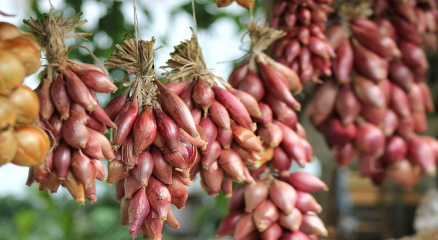
In an increasingly visual world, photography has evolved far beyond a hobby—it has become a powerful tool of connection, identity, and even resistance. From the alleyways of Marrakech to the streets of Tokyo, people around the globe are using photography to capture their realities, share their truths, and reimagine how we see the world. In 2025, the art of photography is no longer limited to professionals or those with expensive equipment. With powerful cameras embedded in nearly every smartphone and editing apps accessible to all, the global population has become a generation of storytellers. A New Language of Expression Photography has become the most universal visual language—transcending borders, politics, and even spoken words. A single image can spark movements, ignite conversations, and bring attention to marginalized voices.From the war-torn zones of Gaza and Ukraine to peaceful protests in Europe and climate marches in South America, everyday citizens are documenting history in real time. These raw, unfiltered images often make their way to global audiences faster than traditional news media."The smartphone is the new pen," says French photojournalist Camille Laurent. "People don’t just take photos—they share their worldviews." The Rise of Visual Identity In cities like New York, Seoul, and Berlin, photography has become deeply intertwined with personal branding. On platforms like Instagram and Threads, visuals are the currency of influence. Whether it’s fashion, travel, activism, or mental health, photography is the lens through which individuals craft and project their identity. This has also sparked a global aesthetic—where minimalist cafes in Istanbul resemble those in Paris, and sunlit "golden hour" selfies are universal. Yet within this visual sameness, cultural uniqueness is also being celebrated. Photographers are reclaiming their heritage—using traditional attire, rural landscapes, and local rituals to tell stories that challenge stereotypes and global homogenization. AI, Ethics & The Future As artificial intelligence blends with photography, questions of ethics and authenticity are surfacing. AI-generated portraits and edited realities raise concerns about truth, body image, and media manipulation. Yet, at the same time, AI tools are empowering more people to create stunning visuals without formal training—democratizing creativity in ways never imagined. "We’re entering an era where the line between photography and digital art is blurring," notes Japanese visual artist Rei Nakamura. "But the emotion behind the image still matters most." A Global Bond In refugee camps in Jordan, schoolchildren are given disposable cameras to capture their lives. In Scandinavian forests, nature photographers use drones to document wildlife. On African coastlines, photographers are preserving indigenous stories that were never written down. Despite the diversity of context, one thing is clear: photography connects humanity. It offers empathy. It builds bridges. In the words of American photographer Dorothea Lange, "Photography takes an instant out of time, altering life by holding it still." And today, more than ever, the world is watching—frame by frame.

In an increasingly visual world, photography has evolved far beyond a hobby—it has become a powerful tool of connection, identity, and even resistance. From the alleyways of Marrakech to the streets of Tokyo, people around the globe are using photography to capture their realities, share their truths, and reimagine how we see the world. In 2025, the art of photography is no longer limited to professionals or those with expensive equipment. With powerful cameras embedded in nearly every smartphone and editing apps accessible to all, the global population has become a generation of storytellers. A New Language of Expression Photography has become the most universal visual language—transcending borders, politics, and even spoken words. A single image can spark movements, ignite conversations, and bring attention to marginalised voices. From the war-torn zones of Gaza and Ukraine to peaceful protests in Europe and climate marches in South America, everyday citizens are documenting history in real time. These raw, unfiltered images often make their way to global audiences faster than traditional news media. "The smartphone is the new pen," says French photojournalist Camille Laurent. "People don’t just take photos—they share their worldviews." The Rise of Visual Identity In cities like New York, Seoul, and Berlin, photography has become deeply intertwined with personal branding. On platforms like Instagram and Threads, visuals are the currency of influence. Whether it’s fashion, travel, activism, or mental health, photography is the lens through which individuals craft and project their identity. This has also sparked a global aesthetic—where minimalist cafes in Istanbul resemble those in Paris, and sunlit "golden hour" selfies are universal. Yet within this visual sameness, cultural uniqueness is also being celebrated. Photographers are reclaiming their heritage—using traditional attire, rural landscapes, and local rituals to tell stories that challenge stereotypes and global homogenisation. AI, Ethics & The Future As artificial intelligence blends with photography, questions of ethics and authenticity are surfacing. AI-generated portraits and edited realities raise concerns about truth, body image, and media manipulation. Yet, at the same time, AI tools are empowering more people to create stunning visuals without formal training—democratising creativity in ways never imagined. "We're entering an era where the line between photography and digital art is blurring," notes Japanese visual artist Rei Nakamura. "But the emotion behind the image still matters most." A Global Bond In refugee camps in Jordan, schoolchildren are given disposable cameras to capture their lives. In Scandinavian forests, nature photographers use drones to document wildlife. On African coastlines, photographers are preserving indigenous stories that were never written down. Despite the diversity of context, one thing is clear: photography connects humanity. It offers empathy. It builds bridges. In the words of American photographer Dorothea Lange, "Photography takes an instant out of time, altering life by holding it still." And today, more than ever, the world is watching—frame by frame.

Global stock markets remained mixed today as investors weighed fresh U.S. inflation data, corporate earnings reports, and the ongoing economic uncertainty in China and Europe. The U.S. stock market opened slightly higher on Monday morning, with the Dow Jones Industrial Average rising 0.4%, the S&P 500 climbing 0.3%, and the Nasdaq Composite gaining 0.5% in early trading. Investors responded positively to June's U.S. Consumer Price Index (CPI) report, which showed inflation cooling slightly to an annual rate of 3.0%, down from 3.3% in May."Markets are optimistic that the Federal Reserve may pause or even cut interest rates by the fall," said Lisa Raymond, chief analyst at Morgan & Co. "But it's still a wait-and-see situation, especially with more earnings coming this week." Wall Street Opens Higher Dow +0.4%, S&P 500 +0.3%, Nasdaq +0.5% on Monday morning. Boosted by June CPI showing inflation cooled to 3.0% (down from 3.3%). Hopes rise for potential Fed rate cut or pause by fall. The U.S. stock market opened slightly higher on Monday morning, with the Dow Jones Industrial Average rising 0.4%, the S&P 500 climbing 0.3%, and the Nasdaq Composite gaining 0.5% in early trading. Investors responded positively to June's U.S. Consumer Price Index (CPI) report, which showed inflation cooling slightly to an annual rate of 3.0%, down from 3.3% in May. "Markets are optimistic that the Federal Reserve may pause or even cut interest rates by the fall," said Lisa Raymond, chief analyst at Morgan & Co. "But it's still a wait-and-see situation, especially with more earnings coming this week." Tech Leads the Way Technology stocks led the gains in the U.S., with Apple (AAPL) up 1.8% and Nvidia (NVDA) jumping 2.4%, as demand for AI and semiconductors remains strong. Tesla (TSLA) also rebounded, rising 3.1% after announcing better-than-expected Q2 vehicle deliveries. Global stock markets showed a mixed performance as investors weighed persistent inflation concerns against a wave of corporate earnings reports. While strong results from major tech companies helped lift some indexes, uncertainty surrounding central bank policies and the future path of interest rates kept others in check. In the U.S., Europe Struggles on Growth Concerns Meanwhile, European markets showed little movement, with the FTSE 100 in London flat and Germany’s DAX down 0.2%. Investors remain concerned about weak industrial output and rising energy costs across the Eurozone.“The European economy is showing signs of fatigue,” said Carla Dupont, economist at BNP Paribas. “High borrowing costs and geopolitical tensions are dragging down business activity.”Global stock markets showed a mixed performance as investors weighed persistent inflation concerns against a wave of corporate earnings reports. While strong results from major tech companies helped lift some indexes, uncertainty surrounding central bank policies and the future path of interest rates kept others in check. In the U.S., Market Performance Summary Table Region Index/Company Movement (%) Key Driver USA Dow Jones +0.4% Positive CPI report (3.0% inflation) S&P 500 +0.3% Rate cut optimism Nasdaq +0.5% Tech stock gains Apple (AAPL) +1.8% Strong AI demand Nvidia (NVDA) +2.4% Semiconductor growth Tesla (TSLA) +3.1% Strong Q2 deliveries Europe FTSE 100 (UK) 0.0% Flat due to economic uncertainty DAX (Germany) -0.2% Weak industrial output, high energy costs Asia Nikkei 225 (Japan) +0.6% Strong export performance Shanghai Composite -1.2% Property sector risks, low consumer spending Asia Mixed as Chinese Markets Slump In Asia, markets showed mixed results. Japan’s Nikkei 225 gained 0.6%, supported by strong export data. However, Chinese markets fell sharply, with the Shanghai Composite down 1.2%, as fears about the country’s property sector and sluggish consumer spending persisted. Gains in consumer and tech sectors pushed markets higher, but weaker-than-expected bank earnings and inflation-related jitters limited broader momentum. European markets edged lower as traders grew cautious about global trade tensions and slowing growth indicators, while Asian markets saw mixed results, with Hong Kong posting modest gains and Tokyo slipping slightly. Overall, market sentiment remains cautious as investors await further economic data and guidance from central banks. Looking Ahead Investors are now turning their focus to key corporate earnings this week from major banks like JPMorgan Chase, Goldman Sachs, and Citigroup, as well as tech giants like Netflix and Microsoft. The results are expected to provide a clearer picture of business resilience amid high interest rates and uncertain global demand. Overall, market sentiment remains cautious as investors await further economic data and guidance from central banks.

Dhaka – The National Board of Revenue (NBR) has introduced a groundbreaking taxation policy targeting social media influencers and digital content creators across Bangladesh, marking a significant shift in how digital income is regulated in the country.This policy requires influencers earning through sponsored posts, affiliate marketing, digital product promotions, livestreaming tips, brand collaborations, and platform ad revenues—such as from YouTube, Facebook, Instagram, and TikTok—to formally declare their income and pay taxes like other professionals. The initiative is part of the government's broader push to bring the booming digital economy under fiscal oversight and enhance national revenue collection.“Digital creators are now part of the economy — they must contribute like others,” said a senior NBR official. “We cannot leave such a rapidly growing sector untaxed while other industries bear the burden.” Why Now? Over the last few years, Bangladesh has seen a dramatic rise in the number of content creators. From tech reviewers and food bloggers to lifestyle influencers and online educators, thousands of individuals now generate substantial earnings online—some reportedly earning Tk 50,000 to over Tk 5 lakh per month. Yet, most of this income has so far gone untaxed due to the informal nature of these operations and lack of regulatory clarity. With the digital economy contributing billions to GDP, the NBR views this as a crucial moment to establish fiscal responsibility in the sector. A Rapidly Expanding Digital Landscape Platform Estimated Bangladeshi Users Common Income Sources Facebook 45+ million Page ads, brand deals, sales YouTube 30+ million viewers AdSense, sponsorships, merch Instagram 10+ million Fashion and beauty partnerships TikTok 20+ million Short-form video promotion income Mixed Reactions from Creators The announcement has sparked a wave of responses among Bangladesh’s digital creators. Some influencers welcome the move as a step toward greater legitimacy and recognition of their profession. “If I’m treated like a business, I’ll run it like one,” said Mehzabin Akter, a Dhaka-based makeup influencer with 500K followers. Others fear the complex paperwork, new compliance responsibilities, and reduced net earnings could discourage newcomers or disrupt smaller creators’ operations.“I make less than Tk 30,000 a month from affiliate links. If I need to hire an accountant, pay taxes, and file returns, it’s just not worth it,” said Rajib Hossain, a tech YouTuber from Rajshahi. Advice from Tax Professionals They recommend: Keeping digital invoices and receipts for all income Recording payments from platforms like Google AdSense and TikTok Creator Fund Maintaining contracts for sponsored posts and brand deals Consulting professionals for annual tax filing assistance Experts also point out that in many cases, only income exceeding a specific threshold (Tk 3 lakh annually) will be subject to taxation, meaning smaller creators may fall below the taxable line—but must still report their income. Looking Ahead This policy is just the beginning. The government plans to roll out education campaigns, webinars, and digital guides to help influencers understand their obligations and avoid penalties. Talks are also underway about possibly introducing flat tax schemes or digital income brackets specifically for freelance and creator-based work. Moreover, some officials believe this could eventually pave the way for government-verified digital creator licenses or IDs, opening the door to greater access to loans, business registration, and legal protections for creators. Final Thought As Bangladesh’s digital content economy matures, the line between passion and profession continues to blur. The NBR’s move signals that social media stardom now comes with not just followers and fame—but financial accountability. While the new rules may pose initial challenges, they also reflect growing respect for the industry as a legitimate and powerful economic force. The real test will be in how smoothly both influencers and the tax system can adapt to this digital shift.

In a growing digital crisis, Bangladesh is witnessing a surge in deepfake videos—AI-generated clips that manipulate faces and voices to depict politicians, celebrities, and public figures saying or doing things they never actually did. The spread of these hyper-realistic videos across platforms like Facebook, YouTube, and TikTok has sparked widespread panic, misinformation, and serious reputational harm. Many of these videos are politically charged, featuring high-profile leaders in fabricated scandals or issuing fake statements. The trend has intensified ahead of the upcoming national elections, raising alarms about potential manipulation of public opinion and election integrity. The Bangladesh Telecommunication Regulatory Commission (BTRC) has issued a strong warning to internet users, urging them not to share unverified or manipulated videos. It stressed that spreading such content—knowingly or unknowingly—could lead to legal action under the Digital Security Act, especially if it threatens national stability or individual dignity. “We are closely monitoring social platforms. Anyone found distributing harmful deepfakes may face legal consequences,” said a BTRC spokesperson. Digital misinformation is not new, but deepfakes represent a new level of threat. Unlike simple text-based rumors or poorly edited images, these AI-generated videos can deceive even savvy users, making it harder to distinguish fact from fiction. “People believe what they see,” said Dr. Anika Rahman, a media literacy expert. “When a video appears authentic, it spreads faster and causes more damage—even if it’s later proven fake.” Citizens have reported cases where deepfakes have led to street protests, calls for boycotts, and even harassment of innocent individuals, especially when the content is politically or religiously sensitive. Deepfakes are created using artificial intelligence techniques, particularly deep learning and facial recognition technology. They replace or manipulate faces and voices in videos with startling accuracy, often using just a few photos or audio samples of the target person. Technology Used Purpose Risk Level Deep Learning AI Mimic facial expressions High Voice Cloning Reproduce speech patterns High GANs (Generative Adversarial Networks) Make visuals look real Very High Facebook, YouTube, and TikTok are under growing pressure from both governments and civil society to ramp up content moderation systems. While they all claim to use AI tools to detect and block deepfakes, users and watchdogs argue the response is too slow. “We are working with global AI experts to flag and remove deepfakes faster,” said a Facebook South Asia representative. “But the volume of content makes instant moderation very challenging.” Critics say harmful videos often stay up for hours or even days, allowing millions to view, share, and believe the false content before takedowns happen. Experts believe that more than just tech solutions are needed. Public awareness, media literacy campaigns, and robust fact-checking services must accompany digital platform efforts.Some digital rights groups in Bangladesh are also calling for specific deepfake legislation, similar to what countries like the US and Singapore have introduced. This could include: Criminal penalties for malicious creators Faster platform accountability Mandatory deepfake disclosures for entertainment or satire Verify videos with trusted news outlets Use reverse image/video tools (e.g., InVID or Google Lens) Report suspicious content immediately Avoid sharing unverified clips, even “just for fun” As AI technology continues to evolve, deepfakes will likely become even harder to detect—and even more persuasive. In a digital world flooded with content, truth is now something we must consciously search for. For Bangladesh, a country with over 50 million active social media users, the deepfake challenge is not just a tech issue—it’s a threat to democracy, security, and trust. How the government, platforms, and citizens respond will shape the future of digital credibility in the nation.
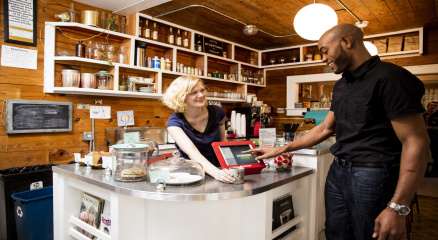
Chattogram, July 20, 2025 — In the bustling alleys of Bangladesh’s cities and towns, the age-old cries of street vendors are being steadily replaced by the silent buzz of smartphones. Facebook Marketplace has quietly emerged as a game-changer for thousands of small vendors across the country, redefining how business is done in an increasingly digital world. From clothing and accessories to electronics and handmade crafts, sellers who once relied on door-to-door sales or modest market stalls are now turning to social media to reach a nationwide customer base — without the overhead of physical storefronts. Take the story of Jahidul Islam from Comilla. Once dependent on walking door to door with a heavy bag of clothes, he now operates from his home with a smartphone and a Facebook page. “I used to knock on 20 doors a day just to sell a few pieces,” he said. “Now, I post pictures online and get orders from all over the country — sometimes even from outside Bangladesh.” His story reflects a wider trend sweeping through both rural and urban Bangladesh: the rise of the digital entrepreneur. This digital shift, accelerated by increased smartphone penetration and affordable internet, is not only transforming commerce — it's changing lives. For many small vendors, particularly women, students, and low-income individuals, Facebook Marketplace provides a flexible, low-cost entry into business. Housewives are turning into online boutique owners. University students are selling gadgets or fashion items between classes. In places where job opportunities are limited, online selling offers a sense of economic independence and self-worth. The Impact at a Glance: Aspect Before Marketplace After Marketplace Startup cost High (shop rent, permits) Low (smartphone & internet) Customer reach Local only Nationwide (even diaspora) Business hours Limited to market hours 24/7 availability Job creation Minimal Growing micro-entrepreneurship Female participation Low Significantly increasing However, this success is not without its complications. With the rise in popularity of Facebook-based businesses, there has also been an increase in fraudulent activities. From misleading product photos and fake brands to outright scams where customers pay but never receive their orders, the lack of formal regulation and oversight is becoming a serious concern. Consumer rights groups report a growing number of complaints related to online transactions, with many victims having little to no legal recourse.“Fraudulent pages are popping up every day,” warns Tania Kabir, a digital rights activist in Dhaka. “People are losing money, and there's no centralized system to hold these vendors accountable. We need government and platform-level regulation that doesn’t hurt honest sellers but protects consumers.” The Bangladesh Telecommunication Regulatory Commission (BTRC) has also acknowledged the need for stronger oversight. Efforts are underway to create a verified seller badge for trustworthy Facebook businesses, as well as a dedicated complaint mechanism linked to the Ministry of Commerce’s consumer rights protection wing. But implementation remains slow, and many sellers remain wary of any policies that may increase their operational costs or introduce red tape. Despite the challenges, Facebook Marketplace continues to flourish. Its success also hints at a larger opportunity — the possibility of creating a more structured, digitally-driven small business ecosystem in Bangladesh. If paired with training in digital literacy, basic e-commerce, and customer service, this grassroots online economy could significantly reduce unemployment and increase income in low- and middle-income communities. Experts suggest that future success lies in partnerships between government, tech platforms, and local NGOs to create support systems for these digital entrepreneurs. Programs offering microloans, digital marketing training, and platform accountability could ensure that Facebook Marketplace continues to be not just a trend, but a long-term driver of economic change. For now, in towns like Chattogram, Rajshahi, Sylhet, and Comilla, Facebook Marketplace is more than a tool — it’s a livelihood. A digital lifeline that empowers the ambitious, supports families, and brings business to doorsteps — not with a knock, but with a notification. Bottom Line: As Bangladesh navigates its way through economic transitions, Facebook Marketplace has emerged as a powerful enabler of digital entrepreneurship. With proper support, regulation, and consumer protection, this informal sector could become a formal force in shaping the future of the country’s economy.
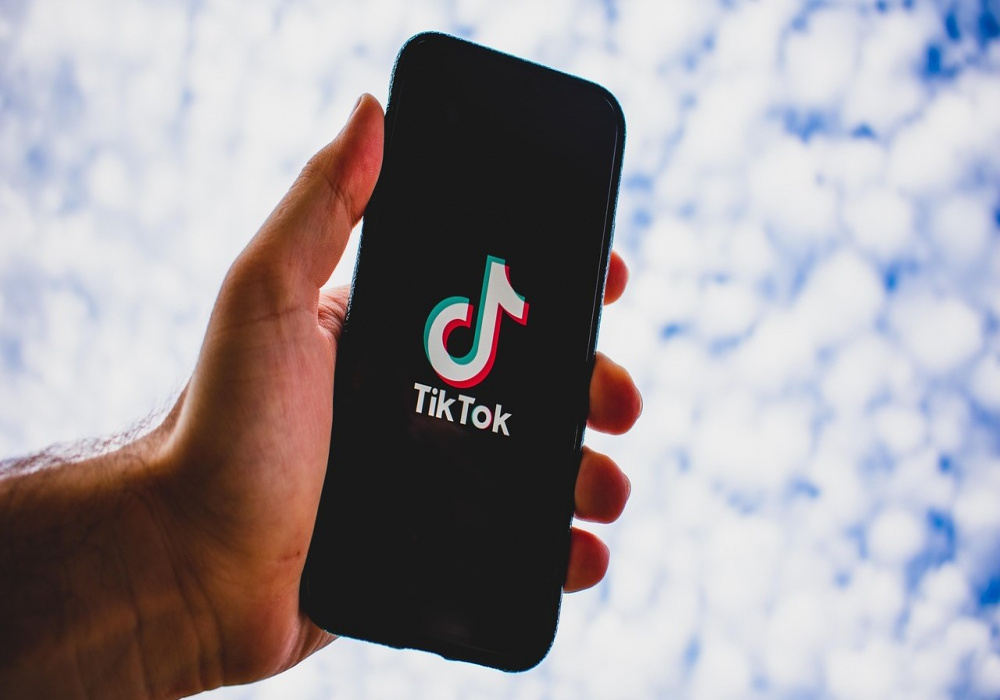
In an era where attention spans are short and social change demands urgency, TikTok has emerged as a powerful new platform for youth-driven activism. What started as a space for dance trends and lip-sync videos has quickly evolved into a vibrant ecosystem where young people are using 15–60 second clips to challenge injustice, raise awareness, and mobilize support for social causes.From climate change protests to gender rights, mental health awareness to political commentary, TikTok’s short-form video format has proven uniquely suited to sparking dialogue and capturing the emotions behind movements. Activists across Bangladesh, India, the Philippines, and beyond are using the platform not just for expression — but for education and mobilization. One powerful example includes the #StudentVoices movement in Bangladesh, where students shared videos demanding reforms in the education system, including calls for more inclusive policies and better mental health support in schools. These clips went viral, sparking mainstream media attention and responses from education officials. Similarly, during the Rohingya refugee crisis or after environmental disasters, TikTokers in South Asia created donation drives, fact-based explainers, and firsthand videos from affected zones — showing the platform’s potential for real-time grassroots journalism. In Manila, a TikTok series debunking election misinformation was viewed over 4 million times, mostly by first-time voters.However, this new wave of digital activism is not without challenges. Critics argue that “slacktivism” — where users feel satisfied simply by liking or sharing posts — may replace real-world engagement. There’s also concern about misinformation, content censorship, and the potential misuse of algorithms that may suppress marginalized voices. Despite these concerns, educators and social researchers recognize TikTok’s potential as an entry point for civic education and social awareness. Many NGOs and advocacy groups now collaborate with TikTok creators to reach younger demographics with accurate, inspiring, and mobilizing content.With over 1 billion users globally, and over 60% under the age of 30, TikTok is not just shaping how youth consume content — it’s shaping how they participate in the world. As digital native generations come of age, their activism is taking new forms — and TikTok, for all its controversies, is proving to be one of their loudest megaphones.
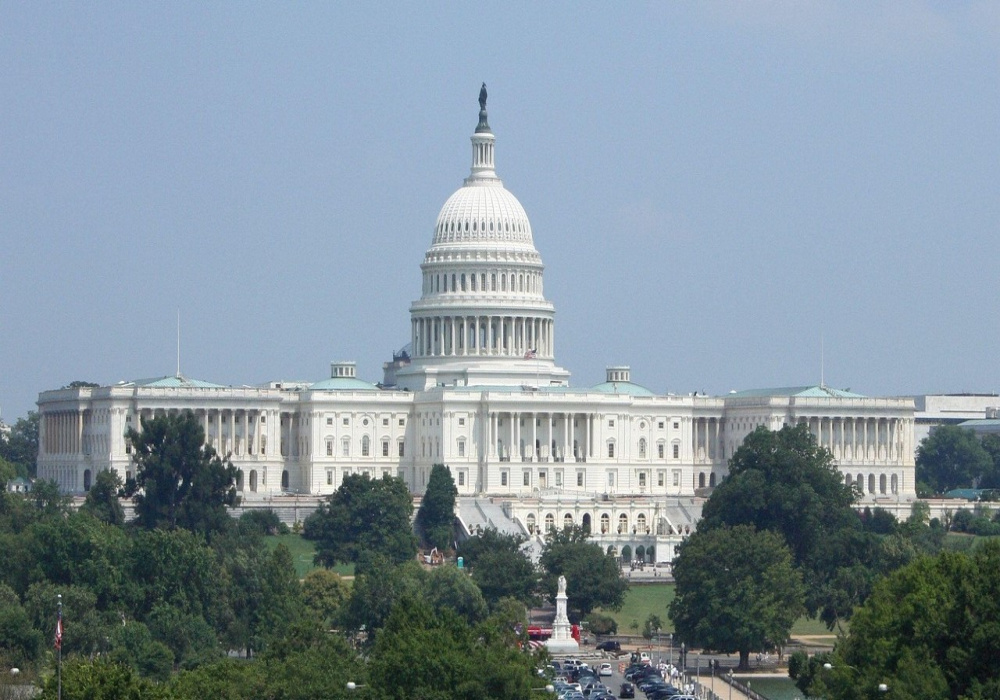
Dhaka – In today’s Bangladesh, politics is no longer confined to public rallies or television talk shows — it’s playing out every day on Facebook, X (formerly Twitter), and TikTok. As the country heads toward its next general election, social media has become a powerful tool for political communication, grassroots organizing, and public debate.Political parties, independent candidates, and youth activists are all turning to social platforms to reach the public directly. Videos, livestreams, memes, and campaign reels now shape political narratives faster than traditional media ever could. “Social media lets us speak directly to the people, without gatekeepers,” said Arman Chowdhury, a digital campaign manager for a leading political party. “In 2025, a viral post can shift public opinion overnight.”According to the Bangladesh Election Monitoring Forum, over 60% of first-time voters rely on social media as their primary source of political information. Parties are investing heavily in digital teams, influencer partnerships, and content creators to boost engagement and shape perception. But the rise of digital politics has a darker side. Misinformation, hate speech, and coordinated disinformation campaigns are spreading rapidly, often polarizing communities and confusing voters. During the recent city elections, fake polls and deepfake videos circulated widely, prompting the Bangladesh Telecommunication Regulatory Commission (BTRC) to issue warnings and take down dozens of misleading posts. “Social media is both a blessing and a threat to democracy,” said Dr. Nilufa Yasmin, a political science professor at Dhaka University. “It amplifies voices but also enables manipulation. Regulation and media literacy are urgently needed.” Civic groups and digital watchdogs are calling for stronger transparency from platforms like Facebook and TikTok regarding political ads, fake accounts, and bot-driven propaganda. Meanwhile, social media has empowered a new generation of digital activists — from environmentalists and women's rights advocates to student leaders. Hashtags like #SaveTheSundarbans, #JusticeForNusrat, and #DigitalBangladesh have sparked national conversations and even led to real-world policy changes. “I use my Instagram to talk about climate justice and education reform,” said Tania Haque, a 22-year-old activist from Narayanganj. “Even if we’re not on TV, we have a voice — and it’s loud.” However, concerns about digital surveillance and freedom of expression persist. Several users have reported account suspensions or harassment after posting critical content about powerful figures or institutions. As social media continues to shape politics in real time, experts urge voters to verify sources, think critically, and avoid echo chambers. “Don’t believe everything you see on your feed,” warned BTRC spokesperson Shahinul Islam. “Use technology, but stay aware.” With elections looming, the digital battlefield is heating up — and in 2025, a single post, video, or hashtag could change the course of the nation.

Russian President Vladimir Putin's high-profile visit to New Delhi has reignited debate in Washington over India's growing proximity to Moscow, at a time when global geopolitical alignments are shifting rapidly.

A black bear suddenly attacked a zookeeper at Hangzhou Safari Park in East China's Zhejiang Province. The bear knocked the keeper to the ground. He struggled to escape, while the animal continued to target him.

Toyah Cordingley's body was discovered half-buried in an isolated section of sand dunes at Wangetti Beach, about 40km north of Cairns, on October 22, 2018.

A Chinese woman who was rescued from earthquake rubble as a child has married her former rescuer after an unexpected reunion years later.

In one of the clips, the former Syrian president is seen mocking the people, saying they spend on mosques but "can't even afford food".

The year 2025 witnessed several large-scale air travel disruptions that affected thousands of passengers worldwide, exposing major gaps in aviation infrastructure, digital systems and regulatory preparedness.

Under the US plan, which Trump is expected to announce before Christmas, Kushner and Witkoff will join former UK Prime Minister Tony Blair on an executive board that will manage Gazas reconstruction.

JD Vance said that immigrants are taking opportunities from American workers.

Architects, artists, clients and partners assess his life and impact over eight decades.

She was a star of London’s post-punk D.I.Y. fashion, art and performance scene, and dressed a generation of rock stars in her otherworldly handmade clothes.

But what was the payout? A critic survives the four-season journey to the premium art fair in Hong Kong, Basel, Paris and now Miami Beach. Here are his takeaways.

The Institute of Museum and Library Services restored the funding after a federal court ruled that moves to dismantle the agency were unlawful.

This season’s bounty includes volumes on far-out artists, unusual cats and enviable gardens.

His innovative approach drew crowds to the Musée d’Orsay, one of France’s flagship cultural institutions, which he led from 2008 to 2017.

Gehry, who died on Friday at 96, made an invaluable contribution to classical music by designing spaces with stunning acoustics.

He designed some of the world’s most recognizable buildings, notably the spectacular Guggenheim Museum Bilbao, his masterpiece.

सीधी मध्य प्रदेश के सीधी में स्थित संजय टाइगर रिजर्व में सर्वे चल रहा है। मांसाहारी और शाकाहारी वन्य प्राणियों का आकलन किया जा रहा है। संजय टाइगर रिजर्व के 9 परिक्षेत्रों में सर्वेक्षण का काम चल रहा है। 124 बीट के 250 कर्मचारी और 11 वालेंटियर सुबह 6 से 9 बजे तक कार्य कर …

नासिक महाराष्ट्र के नासिक जिले में रविवार को एक भयावह सड़क दुर्घटना हुई, जब एक इनोवा कार 1000 से 1200 फीट गहरी खाई में जा गिरी। कार में कुल सात लोग सवार थे, जिनमें से छह की मौके पर ही मौत हो गई। राहत-बचाव दल द्वारा बाद में एक और शव मिलने से मृतकों की …

बालाघाट मध्यप्रदेश से माओवादी ढांचे का अंतिम किला भी ढह गया है. देश के सबसे खतरनाक और एक करोड़ इनामी माओवादी नेता सेंट्रल कमेटी मेंबर (CCM) रामधेर मज्जी ने सोमवार तड़के अपने 11 टॉप कमांडरों के साथ हथियार डाल दिए. यह सरेंडर छत्तीसगढ़ में खैरागढ़ जिले के बाकरकट्टा थाना क्षेत्र के कुमही गांव में हुआ, …

इंटीग्रेटेड ई-चालान प्रणाली से प्रदेश में रोड एक्सीडेंट में कमी लाने की कवायद तेज मुख्यमंत्री योगी आदित्यनाथ के मार्गदर्शन में इंटीग्रेटेड चालान प्रक्रिया से बढ़ेगी रोड सेफ्टी, यूपी होगा अग्रणी राज्य वाहन, सारथी एप, ई-डार, आई रैड और ई-चालान पोर्टलों को एकीकृत करने के लिए बनेगा एआई आधारित प्लेटफॉर्म लखनऊ मुख्यमंत्री योगी आदित्यनाथ के मार्गदर्शन …

मुंबई शेयर बाजार में हफ्ते के पहले दिन भारी गिरावट (Stock Market Crash) देखने को मिल रही है. सुस्ती के साथ ओपन हुआ बॉम्बे स्टॉक एक्सचेंज का 30 शेयरों वाला सेंसेक्स (Sensex) मार्केट क्लोज होने से एक घंटे पहले ही करीब 800 अंक फिसल गया, तो वहीं नेशनल स्टॉक एक्सचेंज का निफ्टी (Nifty) भी फिसलकर …

भोपाल राज्यपाल मंगुभाई पटेल को सशस्त्र सेना दिवस के अवसर पर ध्वज लगाया गया। लोकभवन में सोमवार को सशस्त्र सेना झंडा दिवस मनाया गया। राज्यपाल पटेल को सैनिक कल्याण संचालनालय मध्यप्रदेश के संचालक बिग्रेडियर अरूण नायक (से.नि.) ने ध्वज लगाया। राज्यपाल पटेल ने सशस्त्र सेना कल्याण निधि के लिए सहयोग राशि भी प्रदान किया। राज्यपाल …

मुंबई प्रीमियम मोटरसाइकिल निर्माता कंपनी Harley-Davidson ने अपनी नई Harley-Davidson X440T को लॉन्च कर दिया है. कंपनी ने इस मोटरसाइकिल को 2.80 लाख रुपये (एक्स-शोरूम) की कीमत पर उतारा है. इस कीमत पर, नई X440T, X440 लाइनअप में नया, रेंज-टॉपिंग वेरिएंट हो जाता है, जिसमें स्टैंडर्ड X440 को अब रीपोज़िशन किया गया है. रेगुलर Harley-Davidson …

नई दिल्ली भारतीय जूनियर महिला हॉकी टीम ने एफआईएच जूनियर महिला हॉकी विश्व कप में बेहतरीन प्रदर्शन करते हुए वेल्स को 3-1 से मात दी। यह मुकाबला 9-16 क्वालिफिकेशन मैच के रूप में खेला गया। भारत की ओर से हीना बानो (14’), सुनलिता टोप्पो (24’) और इशिका (31’) ने गोल किए, जबकि वेल्स के लिए …